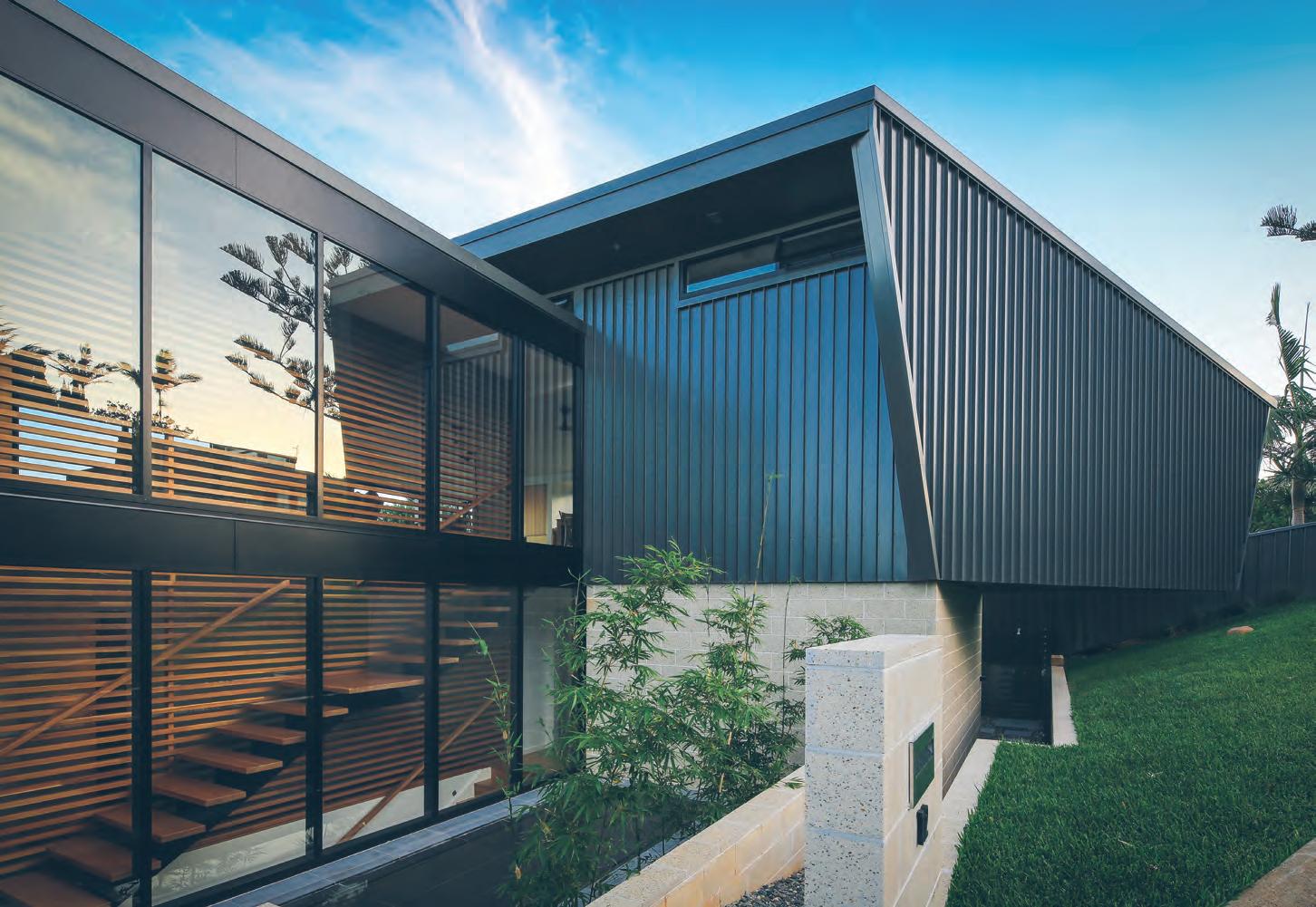WALLS + CEILINGS
LAMINATES + LIGHTING + TILES

SUN CONTROL + SHADING
HOSPITALITY SECTOR
DESIGN TRENDS

WALLS + CEILINGS
LAMINATES + LIGHTING + TILES

SUN CONTROL + SHADING
HOSPITALITY SECTOR
DESIGN TRENDS
The 2023 Red Book is available at gyprock.com.au or by scanning the QR below

DESIGN GUIDE
FIRE, ACOUSTICS AND THERMAL


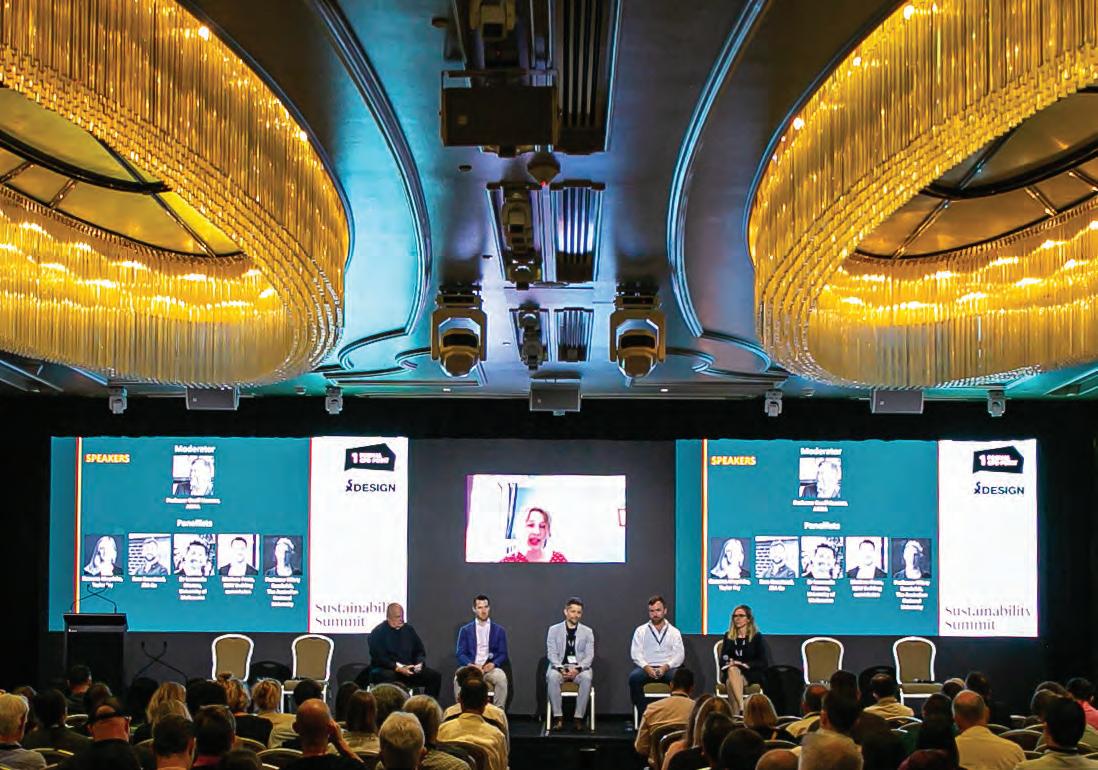
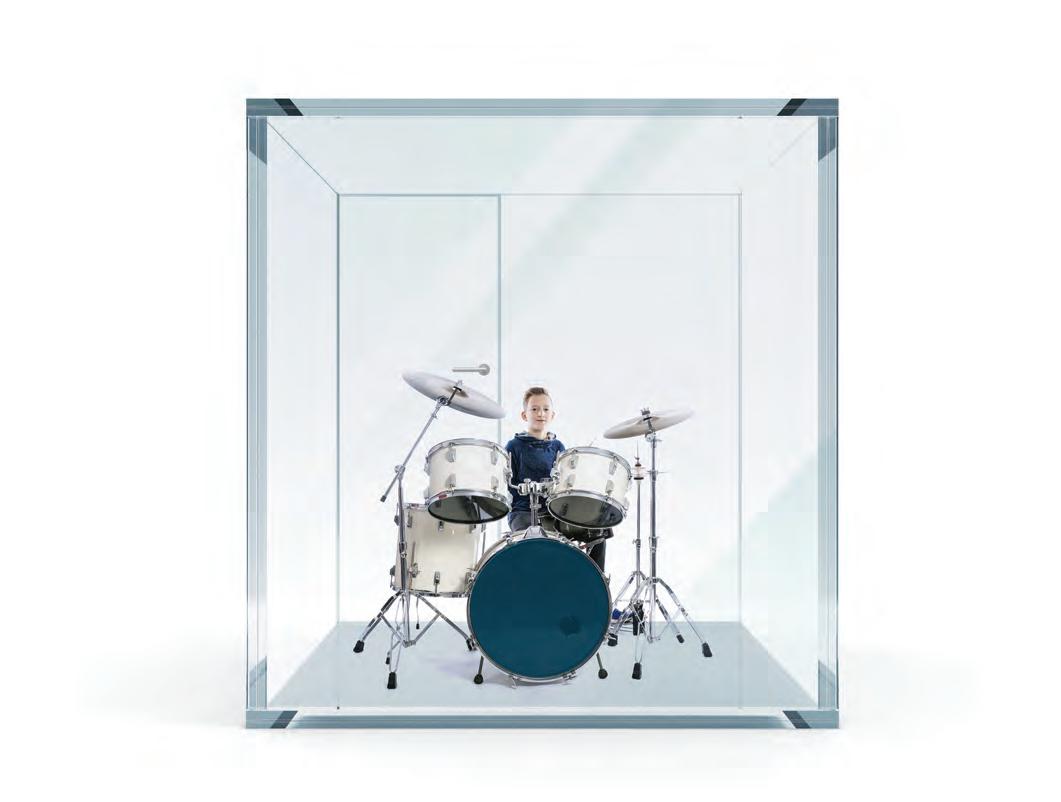
Recently, while podcasting retail and hospitality venue designer Callie van der Merwe, he said something that really took me aback.
“Restaurants are not about food- if you think that, then you shouldn’t be in the restaurant business.”
That was almost an epiphany in some ways.
When asked, What are the things that people get wrong about public design, he replied, “It’s quite simply where designers forget that they design for people. When we have biases and make assumptions about how we think people would behave without looking at what they really do within context. The best way to address this challenge is observation: To understand how people walk you have to look at where they stop and start, sit down, group together or separate etc.”
“You have to look at climate, more specifically sun and shade paths in public squares during certain times of day and year and look at how people engage with it. A common mistake, for example, is to treat seating in public spaces the same way you would treat it in a restaurant. Restaurant or café seating is at 450mm high: it’s the comfortable height for the average height person sitting at a table for a longer period of time.”
But it’s not just about pink sofas and soft lightingsustainability is now part and parcel of hospitality venue design.
In fact, according to a popular US hotel magazine, “Multiple hospitality establishments in recent years have shown that approaching refurbishments, fit-outs and interior design with sustainability as a priority doesn’t mean sacrificing style.”
Another writer noted that “From the building foundation and its relationship to its natural scenario to the choice of lights, sensors, faucets, toilets, appliances, textiles, and furniture, every decision counts, and longevity is vital.”
And there we have it-making hospitality, or if you like, public design far more sustainable, doesn’t mean sacrificing style.
As Michelin Dapo, Success Coach for Hospitality notes, “Trends from 2022, such as digital work and sustainable materials, continue to influence hospitality design trends this year, with green consumerism still expected to play a key role in the decade to come.”
So how would one design for both humans and the challenges of sustainability? Perhaps Callie van der Merwe has an answer:
“Designing for human behaviour is, therefore, almost always better than designing for behavioural changes,” he says.
Words, I believe, all retail and hospitality venue designers should take to heart.
ON THE COVER Sprawling, elegantly, across the dune styled topography of Victoria’s Mornington Peninsular, Alba Thermal Springs and Spa is perhaps the most exciting addition to not just the wellness industry (and yes, that is a thing) in Australia, but also to the tourism industry. The hospitality industry is re-emerging and reimagining itself – and perhaps Alba is the perfect blend of all that, and more.
CAMPAIGN MANAGER Jessica Sukdana production@architectureanddesign.com.au
CAMPAIGN MANAGER Felicia Cindyagatha production@architectureanddesign.com.au
ARCHITECTURE & DESIGN
Phone: 02 9368 0150
Email: info@architectureanddesign.com.au
SUBSCRIPTION ENQUIRIES
Call Customer Service: 02 9368 0150 ISSN 1039-9704
ARCHITECTUREANDDESIGN.COM.AU

Wardle has announced that Michael McMahon has become the practice’s inaugural First Nations Leader.
The recently created role will see the practice enhance its engagement with Indigenous stakeholders for architectural projects and is a step towards reconciling town and Country with Country, one of the practice’s five pillars.
Since joining in 2021, McMahon has assisted in Wardle’s delivery of the Bendigo Law Courts and the University of Tasmania’s Willis Street project in the Inveresk precinct, as well as the Castlemaine Art Museum masterplan. A Bundjalung descendant and born in Nhulunbuy, Northern Territory, McMahon graduated from the Royal College of Art in London in 2020 and his deep research and insight of place and context make him the ideal candidate for the role.
McMahon’s duties will see him support project and management teams on decision making surrounding First Nations issues and forms part of Wardle’s second reconciliation action plan, titled Innovate.
Newly elected Hassell Managing Director, Liz Westgarth, has confirmed fellow re-elected Board Directors (Rob Backhouse, Angus Bruce, Caroline Diesner, Brenden Kelly and Mark Loughnan) and notes that Principal Richard Mullane will join the Board from 1 July 2023.
Over the next three years the Board will continue to drive ambitious commitments to sustainability, diversity and inclusion and technology-based innovation across its international architecture and design practice.
With a background in architecture, urban design, strategic planning, and place making, Mullane has extensive international experience, including 16 years at Hassell based in Sydney, Shanghai, San Francisco, and Melbourne where he is currently based.


Amena Reza has joined Brisbane-based architecture practice bureau^proberts in the newly created role of Head of Strategy and Operations. Reza is no stranger to the built environment industry, having spent most of her career working in architectural design practice in strategic growth roles.
She has also served as a member of the bureau^proberts Advisory Board for the past five years. In her new role as Head of Strategy and Operations, Reza will guide the practice into its next phase of design locally and internationally.
Reza’s career in architectural practice began in 1999 at ML Design as the firm’s Financial Controller, where she quickly progressed to Finance Director and Partner.
She went on to become Managing Director in 2014, after leading a successful ownership transition.
Since 2017, Reza has held several contract senior C-Suite Executive roles, as well as consulting to both the commercial and not-forprofit sectors. She is currently the Deputy Chair of the RSPCA Qld Board and is a Member of the Audit & Risk Committee for Mining.

Fender Katsalidis have announced the promotion of two senior leaders within the practice’s Sydney and Brisbane Studios, at a time when both outposts are growing in influence.
Jessica Lee has been appointed as Studio Lead in the Brisbane office, while hospitality expert Angela Biddle joins the Sydney office as Principal.
Lee has been a long-time team member at FK, joining the practice as a graduate in 2005. Involved in delivering a number of critically acclaimed seniors living projects, Lee’s expertise lies in creating accessible and human-centric facilities.
Angela Biddle adds some 20 years of design experience to the practice’s Interiors Team, holding prior roles at Scott Carver (Director) and Yoo Hotels and Resorts (Creative Lead). The new Principal’s forward-thinking approach and engagement with clients and stakeholders across an array of sectors makes her an ideal fit for the position.
The appointments have been made as the practice currently works on the likes of Brisbane’s Midtown Centre and Central Place Sydney.
Melanie Grills is the newly created externalfacing role to enable Arup to apply a First Nations cultural lens across its project portfolio. Grills is a Gomeroi (Kamilaroi) woman from Moree in NSW, currently based in Queensland. She brings a wealth of experience in similar roles across large Australian companies, where she had developed deep relationships with key stakeholders, while maintaining strong connections to Community and Country.
Stuart Tanner has officially commenced his role as National President of the Australian Institute of Architects, becoming the first Tasmanianbased National President this century.

Tanner was confirmed as the new National President yesterday, which additionally endorsed the ACT’s Jane Cassidy as 2023/2024 National President-Elect.
Tanner will assist the Institute in achieving its goal of being Australia’s definitive voice for built environment professionals.
Mark Gazy has moved to HDR to assume the role of Civic Principal, strengthening the practice’s commitment to delivering cityshaping projects and precincts.
Gazy’s 25 years as a built environment professional spans across the mixed-use, residential, commercial, education and urban design sectors at the likes of BVN, Tzannes, SJB and AJC. Gazy’s role at HDR will see him work alongside the practice’s health, education, science and defence teams to innovate operations.

Gazy will combine both his own personal expertise with that of HDR’s to deliver an array of projects and precincts including build-to-rent and social and affordable housing. HDR’s work in public infrastructure will see him operate alongside governments to deliver high quality justice and correctional health facilities.
Tanner founded Tanner Architects in Hobart 23 years ago, holding a strong connection to the Australian landscape and its relationship to architecture. He takes over from former National President Shannon Battison, who will remain on the Board as Immediate Past President. Tanner is full of praise for Battisson as she moves away from the National Presidency.
Hassell has unveiled its first ever female Managing Director, with Australia’s Liz Westgarth to oversee the practice’s worldwide operation from 1 July 2023.


Regarded as a generational shift for the practice, the Sydney-based Westgarth will lead Hassell into a new chapter. The practice hopes to set a precedent for gender equity through the appointment and its commitment to diversity and inclusion.

 ABOVE Mark Gazy.
ABOVE Liz Westgarth.
ABOVE Jessica Lee (top) and Angela Biddle (bottom).
ABOVE Stuart Tanner.
ABOVE Mark Gazy.
ABOVE Liz Westgarth.
ABOVE Jessica Lee (top) and Angela Biddle (bottom).
ABOVE Stuart Tanner.
Recognised as a paragon of sustainability across the globe, the Sydney Opera House’s journey has been decades in the making. The creation of the institution’s Environmental Sustainability Policy and subsequent Environmental Action Plan put them on the path, with a number of pioneering initiatives (more on that later) resulting in the certifications.
Working closely alongside the Green Building Council of Australia, the Opera House created a pilot performance tool, which sought to measure the performance of an existing building. The Opera House’s Environmental Sustainability Manager, Emma Bombonato, explains.
We're looking at performance against ourselves rather than compared to another kind of cultural institution or performing arts venue. It's really important because it sets the trajectory,” she says.
“Four star Green Star was achieved, followed by five Star Green Star three years later. Our big ambitious goal for our 50th year was to achieve a six star Green Star rating.
“It laid the foundation for what we were looking for, but we had been working on it for over 10 years. So, in terms of us being able to get there, it's been a long time, but it's really been something that the whole organisation has known about and has been committed to since 2010.”
The Environmental Action Plan, or EAP for short, is broken up into a number of focus areas, including engagement and experience, building performance and community engagement. Eight hero goals are contained within the report, which is to do with the likes of building performance, energy consumption, water consumption, and increasing waste targets. Bombonato says the goals set were extremely ambitious, but each has been carried out.
“We wanted to achieve an 85 percent recycling rate, ensure all construction waste was diverted from landfill, eliminate single-use packaging, and embed sustainability in performances and outdoor events to align with international best practice. The objective is to achieve sustainable event management compliance with the international standard.”
2018 saw the Opera House reach carbon neutrality, with a major part of this certification attributed to the adoption of renewable energy. Despite the fact that you can’t exactly place solar panels on arguably the most recognisable building in the world, the Opera House team found a way.
“Renewables on-site are not a possibility for us, but we looked at a new model that was becoming more commonplace,” Bombonato continues.
“With the renewal of our electricity contract, we started thinking about the benefits in terms of reducing carbon emissions over time and contributing to New South Wales' transition to renewable energy. We've now procured 100 percent renewable energy, demonstrating that various models can achieve this goal.”
Arguably the most intriguing project that assisted in the achievement of 6 Star Green Star is the creation of an artificial reef at Bennelong Point, which has boosted local ecosystems. Bombonato says she inherited the project when she joined the Opera House, but regards it as her favourite to date.
“We received a grant from the New South Wales Environmental Trust, collaborating with UTS. The project involved installing structures along the sea wall to create habitats, about 28 little pods in groups of three. They are designed to mitigate the decline in natural habitat caused by the artificial seawall," she explains
"With that, in 2017, the reef structures were installed and over time, they became crusted with plant and materials like kelp, creating a habitat for juvenile fish species. Baseline surveying was done before installation, and post-installation surveys now show around eight additional species being surveyed around the site, proving the success of this type of project.
“Recently, the white seahorse, an endangered species, was discovered on the site, making it a significant achievement for the project. It allows us to contribute to and create awareness for the marine environment in Sydney Harbour, which is our backyard and needs protection.”
Looking forward as opposed to back, Bombonato is focused on what comes next. The current EAP is due to finish at the end of 2023, with ARM Architecture’s recent refurbishment of the interior spaces laying the platform for the future.
“From an environmental perspective, it's about ensuring that environmental sustainability and heritage conservation work together. We aim to retain and look after the heritage fabric while renewing the space to meet organisational and community needs,” Bombonato says of the ARM project.
“Now, we're looking at what's next and how we can integrate environmental and social sustainability goals more cohesively.
Maintaining our Six Star Green Star is crucial, but we also aim to become climate positive by looking at electrification, fossil fuel-free options, circular economy, and contributing positively to nature and the environment.
“We want to demonstrate leadership and inspire others to take action."
I think its fair to say that the Opera House has already inspired others to take action.
You might remember that a couple of months ago we reported that the Sydney Opera House had received a 6 Star Green Star rating.


 TOP View of the Sydney Opera House from the west. Photography by Bernard Spragg.
BOTTOM LEFT ARM Architecture’s renewal of the Opera House’s interior spaces. Photography by Chris Bennett.
TOP View of the Sydney Opera House from the west. Photography by Bernard Spragg.
BOTTOM LEFT ARM Architecture’s renewal of the Opera House’s interior spaces. Photography by Chris Bennett.

It is both rare and extraordinary to be completely absorbed into another existence; foreign, yet welcoming, stark, yet inviting. It is the magic created by an intertwining of exceptional skills from (to name the two major players in a cast of hundreds) Hayball Architects and MALA Landscape and Urban Design.
Sprawling, elegantly, across the dune styled topography of Victoria’s Mornington Peninsular, Alba Thermal Springs and Spa is perhaps the most exciting addition to not just the wellness industry (and yes, that is a thing) in Australia, but also to the tourism industry. The hospitality industry is re-emerging and reimagining itself –and perhaps Alba is the perfect blend of all that, and more. For this iteration of wellbeing is frankly stellar in every way.
Fifteen hectares of former farmland, perched above the secret and sought-after mineral aquafers of Victoria’s coast, rural Fingal has been the sight of much activity since 2018.
“It was by word of mouth,” says Eugene Chieng, Project Principal and Principal of Hayball, of their initial connection in 2018 with the instigators of Alba. Though new to the business they were keen to spare no expense in creating a globally renowned centre of excellence – and began with a budget of $90m. After numerous conversations, meetings and even a reconnoitre to research facilities in China, Eugene says the partnership between them and Hayball felt workable. “We clicked,” he says. “It’s a bit like dating really,” he adds with a wry smile.
But there was nothing much to laugh about in the years leading up to the grand opening in 2022. The challenges of creating 32 geothermal pools being an engineering feat in itself, and then to create the infrastructure and statement architecture where further experiences are created presented both the building architects and landscape architects (and a roll call of engineers) with challenges rarely (if ever) confronted previously. Then, just for the icing on the minimalist cake, there was a pandemic.
MALA Landscape and Urban Architecture were commissioned to create a masterplan of the landscape, bathing and water experiences across the property. For Campbell Morris, Founding Director of MALA, the project offered tremendous scope and the unexpected opportunity to work in a familiar location.
“The sight means a lot to me, my parents had a goat farm directly opposite the site, through the 70s and 80s,” reminisces the landscape designer. His love for the locale continues, and he lives and works very near to site, which allowed his team easy access and a site familiarity rarely experienced on remote projects.
“We designed on site. We said that the design must be born from the site and maximise what its best assets were. There was an old homestead there so we designed in there… go out with a drone and a tape measure and a can of spray paint… mark it out, change our minds,” says Campbell with obvious enjoyment. “It’s pretty unique that you get to do that.”
So, with the signing on of MALA, a powerful, complex partnership was forged, the result of which is already winning awards. For never have you seen such an intertwining of skills and vision. Sight lines from the pools, and sightlines from the dramatic lounges and various spaces are equally important – and must co-operate without falter, which they do.
The views from expansive windows accentuate the rural and relaxed context –relieving any suggestion of the business at hand, which includes, on the interior side, 21 treatment rooms and a restaurant for patrons.
Unlike the Hayball team, the MALA contingent won’t see the full flush of their labours for some time.
When asked when he expected the gardens to be ‘finished’, Campbell hesitates.
“Probably never,” he says. “The thing about gardens is that they continue to evolve.”
The general landscape design is not one of dune regeneration with pools scattered within. No, this is minutely designed topography, and
a purposefully curated floral display, including the fruits of 60,000 seeds collected from the area.
The scene will change with season, the mist garden blues, and greys will at times be outshone by the swathes of golden acacia, a winter show if native orchids and silvered waves of grasses when Summer comes and crisps the foliage into pencil slim stems across the horizon.
“It is a horticultural journey, an experience,” says Campbell.
But surely the stars are the twinkling 32 pools? No, oddly there is no competing between elements. But oh, my good lord, those pools! Each a unique treat into which one can figuratively submerge. Guests follow a trail down the hill, leading them past countless options of observance or involvement.
The unusually (and natural) blue waters arrive at the plant rooms, piping hot, from 700 metres below the surface. They are lightly laced with chlorine, diverted to each pool, every day, at the end of which the water is treated once again and injected back into the aquafer.
Alba has a license for a set amount of water that they can pull from the aquafer – which meant a fair bit of fluid Tetris when it came to designing the pools size and volume.
Hydronic engineering has been pivotal, and the water feature designers (JML Water Feature Design) who made a river out of hand cut pieces of granite, are to be bowed down to in deep respect. Here again, is rather aweinspiring attention to detail. The Rapids (the river feature) has its flow rate synced up to the tidal flow of the nearby Cape Shank.
Come on, that’s wild. Do the clients notice? Maybe, maybe not; but it’s there in the fine detail. Every pool is different in size, depth, purpose, and temperature. Each a different experience from contemplative (allowing you to lie back and watch a wedge tailed eagle fly across a flawless sky) to social (the cave pool and sauna near the main building offers a chance to share with others), to purely indulgent - you can order a cocktail to be brought poolside from the restaurant.
Fifteen hectares of former farmland, perched above the secret and sought-after mineral aquafers of Victoria’s coast, rural Fingal has been the sight of much activity since 2018.
And here is where we return to the central building works. Every space offers curves one way or another. Waves of design that tempt the patrons, the journeymen, to stop and feel the volume of the space. The stillness. What Eugene refers to as “restraint and refinement” is to the observer a monument to minimalism. There are no distractions across beautifully paced curved walls, immaculate changing rooms, or thoughtful pools of reflection. Every space is an invitation to stop and be present. Intrusion is not allowed to insert itself into the Alba experience.
“Using minimal materials was very much a response to the brief around providing a space which really let you focus on or reflect on your
experience,” says Bianca Hung, the Lead of Hayball Interiors, as well as as an Architect in her own right, as well as being a Principal of the company.
There is something to be said here about the power of negative space. Almost monastic, there is such a presence of the absent, that there is an overpowering need to simply surrender all your external worries to the void. Wordy I know –but that is power of the architecture here – and perhaps nowhere more poignantly than the dramatic internal reflection pool.
“I do have to say the pivoting central moment in the building, with the spiral stair, the reflection pond, the handmade ceramic tiles …is quite special,” responds Bianca Hung when pushed

to choose of her favourite Alba aspect. “Also knowing how hard it was to make – that adds to the appreciation. I genuinely think the team has created a really beautiful moment that looks effortless but has so much effort and hard work behind it.”
For Eugene Chieng, this four or five-year project will be living rent free inside his mind for years to come. It is not an experience you can (or even want to) shake off when moving forward with the next project.
“I think it will stick in my head for life,” he says rather fondly, though in the next breath he says visiting the project now makes him hypercritical, he has a list of things he would do differently if there was to be a ‘next time around’.
There is something to be said here about the power of negative space. Almost monastic, there is such a presence of the absent, that there is an overpowering need to simply surrender all your external worries to the void.
But that is the lot of any creator, is it not?
“It’s like having as child,” says the Project Lead. “It’s a constant reminder of how we can do better next time.” Without missing a beat Bianca chimes in. “What number child is this?” And the leads laugh the laugh of the ‘just and the brave’ who have battled side by side to create a globally recognised, and applauded, space.
But on further enquiry, Project Director, Eugene Chieng describes how his greatest moment is really found in other people’s response.
“I think the moment when I thought we’d nailed it, was talking to people I suppose. Just talking to people in the pools in terms of how they have experienced (Alba), and what they think of the place. It is extremely satisfying.”
It is perhaps the nature of architect-inspired writers to sometimes let the more utilitarian features slip by – and with guilt for not mentioning it sooner, it is important to say Alba offers more than a most superlative architectural experience. There are of course equally sublime treatment rooms, in-between treatments lounge areas, change spaces and showers, and of course a restaurant solely for the those who are booked in for the spa experience. Attending luncheon in a luxurious, thick robe is de rigueur at Alba, with numbers carefully restricted (never more than 400 may attend Alba at any one time) to maintain that quietude.

“This idea of rejuvenation is something that is important to us, and that sense of calm, and the idea of the journey throughout the building, and the volume, the geometry was very much about creating a feeling in the space so that you can relax and forget about everything. You can surrender to being there and really focus on that experience,” explains Bianca.
The encounter that is successfully presented to Alba clients is one, fully integrated, experience designed to inspire clients to reach a better self. There is no inside, no outside – there is simply one, perfectly balanced experience. It is Alba.









There’s a track, winding back …
Being scooped out of bed by Mum in the predawn exodus known as ‘going on holidays’ was always a sickening sign of things to come. For school holidays in those days (let’s say the 60s) meant being deposited in the back seat of Dad’s car (including, during one particularly bad holiday, in the almost windowless Chrysler Charger. Jesus) and driving like a bat out of hell for one or two days, straight, toward our much-loved Victorian based family.
WORDS PRUE MILLERCar trips were to be dreaded; no car air conditioning in those days, merely the roar of an open window, and the flapping of a wet tea towel that promised (but did not deliver) cooler air. And for entertainment there was the never changing view of the back of my parents’ heads. The sole upside was the promise of a visit to the exotic sophistication of the oddly colourful Niagara Café, found within cooee of the disappointingly diminutive dog on the tucker box. Gundagai was an oasis.
The Niagara, the oldest continuously Greek run café in Australia, was the spot where all travellers came for a welcome reprieve from stinking hot cars, and relentless boredom. The Niagara of those days was supremely exotic. Curved glass windows with gilt motifs and promises of culinary delights welcomed one and all.

Hundreds (to a six-year old’s mind) of booths with Laminex table tops and a giant counter that was even more beautiful than the ticket box at the Orpheum Theatre. And all that green light! Coca-Cola in a bottle with a straw, and canned spaghetti on a backdrop of pale white toast. Bliss. So strong are my memories that decades later, when I saw that the Niagara was being saved (nay resurrected), and better still was a recipient of a National Trust (NSW) Award, I felt the world had hope after all.
The Niagara Café was the Art Deco pinnacle of Australian Greek Café’s. Created in 1902 by a Kytherian Greek immigrant, it was in 1938 that it transformed into a beautified Deco delight. There was a distinct flavour of Hollywood styled optimism, with gleaming black curves, ribbed in equally brilliant ribs of chrome, and motifs in gold. For suburban Australians, the Greek cafes - and especially the Niagara, were pure escapism and a source of joy for thousands.
“A couple came in the other day, and they told us how they used to go out to a dance, then come to a café like the Niagara. It was a part of the courtship ritual,” says new Co-owner Kym Fraser.
“Every day someone will say, we had a café just like this in our town,” adds the other half of the partnership, Luke Walton.
Together Luke and Kym have saved this slice of Greek Australiana from almost certain loss. The once classic café had fallen into a rather sad state and had been on the market for a couple of years until it caught the eye of this duo, who had previously only taken on residential projects.
They’d visited the café as far back as 30 years ago, but more regularly stopped by during their Sydney –Melbourne journeys over the last ten years, always admiring the café’s authenticity.

“I think the attraction was really the idea of the restoration of it, we realised how important it was, and how rare it was …I know that sounds like a spiel, but it isn’t. I think we had a sense of that nostalgia and we’d kept an eye out for an impressive building. And we recognised the significance of the café, and early Australian history.”
Gundagai had and still has a special place in Aussie hearts, not one person (in my era anyway), didn’t know every word to On the Road to Gundagai. Before the Big Ram, the Big Sheep the Big (ugly) Prawn, people diverted to Gundagai to see the famous pooch, and visit the Niagara.
But the roadways changed, and the town took a hit tourism-wise. But that traffic diversion did offer an upside.
“Gundagai has something going for it. Once the freeway wasn’t going through, the main street was preserved, the look of it. But the town had lost the banks and post office and newsagency…” says Walton, almost wistfully.
The Niagara, the oldest continuously Greek run café in Australia, was the spot where all travellers came for a welcome reprieve from stinking hot cars, and relentless boredom.TOP A celebration of Australian Greek Cafes can be found in book form (a new edition is shortly to be released) by Halstead Press. Greek Cafes & Milk Bars of Australia, which features fabulous historic detail of the Niagara among many, many others, is a photographic treasure trove of cafes, and the Greek families that ran them.
They saw the renewal of the Niagara as a way of restoring more than just the café, rather “It was bringing back a country town hub…”
The saviours of the café are talking to me while they are driving between Sydney and Gundagai, about a four-hour trip, and despite driving rain they are upbeat and enthusiastic – and very amusing – about the road they have travelled since purchasing the property back in 2021.
“Once we played around with the idea in our heads, we were hooked,” says Walton.
“Kym says to me it was my idea and I say to him it was his idea.” They both laugh and ask me not to print that bit. Too late my friends. “It was a really stupid project for us to take on in a way.” More laughter as the rain got even louder. They got the keys in the first week of Sydney’s Covid lockdown.
Then the hard work began; what could stay, what needed restoration and what needed to be done from scratch. They called on expertise they had accessed on previous projects such as Sydney architect (and mid-century enthusiast)
Graeme Bell from Trace Architects, (“I think
Grahame felt sorry for us when he saw the state of it!”) Eliot Bale from Jigsaw Constructions and Mike Mayhew from Swagman Joinery.
Much of the interior was still original, the booths, the glorious counter, the iconic Niagara sign backdrop. However, the main counter mirrors, the enormous iconic rooftop sign, and the previously hand painted, domed ceiling were to be major projects, (and problems) requiring expert skills, and serious dollars. Images on their Facebook page (Niagara café Gundagai NSW) has images of what was uncovered.

According to Fraser, “We wanted to do the project justice, and came to the conclusion that if we’re going to do it, we’re going to do it right.”
But what also had to be considered was more than a sympathetic renovation – it also had to be a practical and successful café. A whole new kitchen (a major expense) was needed, an industrial sized coffee machine, and a lighting system that offered colour choices from familiar neon hues, to sophisticated warm tones.
The new owners were keen to also preserve nostalgia within the menu – the burgers and

big breakfasts are a dream, while adding contemporary items such as pulled pork dishes, rich eggs benedict and fresh fruit granola. It’s melange of the comfort of retro, and the satisfaction of ‘big city’ dishes. The addition of a liquor license was like whipped cream on top of an iced coffee.
The work has paid off.
The café seats 62, and on weekends they fill the seats three times a day, and school holidays are just crazy. It seems the renovators turned café operators have found the retro recipe for success.
The timing for this project was perhaps ideal; people gripped by years of pandemic- driven uncertainty, people sought the comfort of the past. A yearning for simpler times, when problems were smaller, choices less complicated and perhaps also a chance to reminisce about long car trips with parents who are long gone from this mortal coil. There is a place for concrete walls, cavernous spaces and minimalist chic – but you can’t build a beloved history.

When it comes to protecting what really matters, you don’t compromise.


That’s why you rely on fire safety by Promat. We produce construction materials that meet the highest fire safety standards to protect generations to come. Thanks to continuous research, we develop new, lightweight materials to build fire safe spaces with zero impact on our climate.
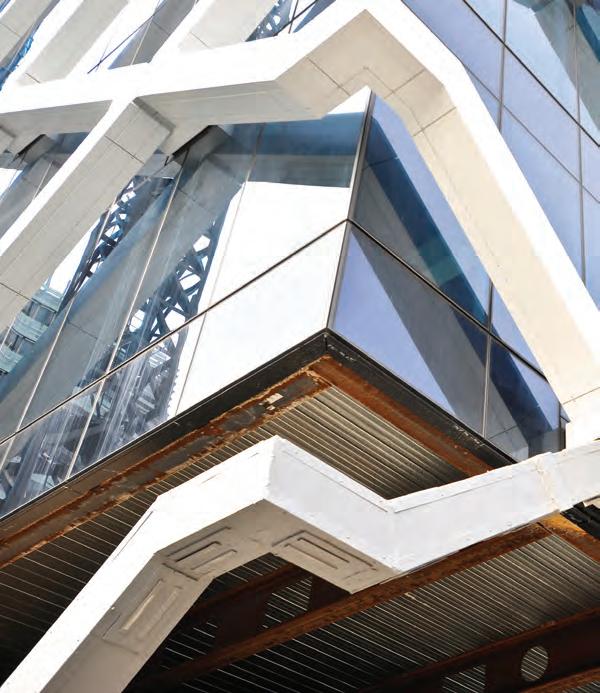
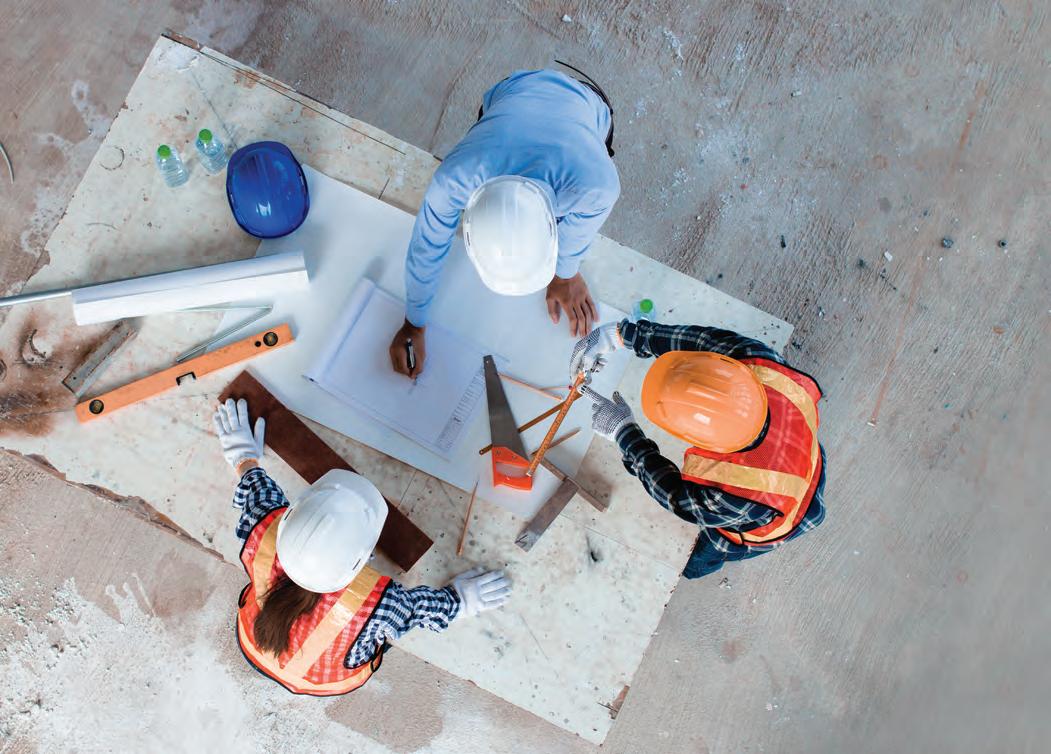
www.promat.com





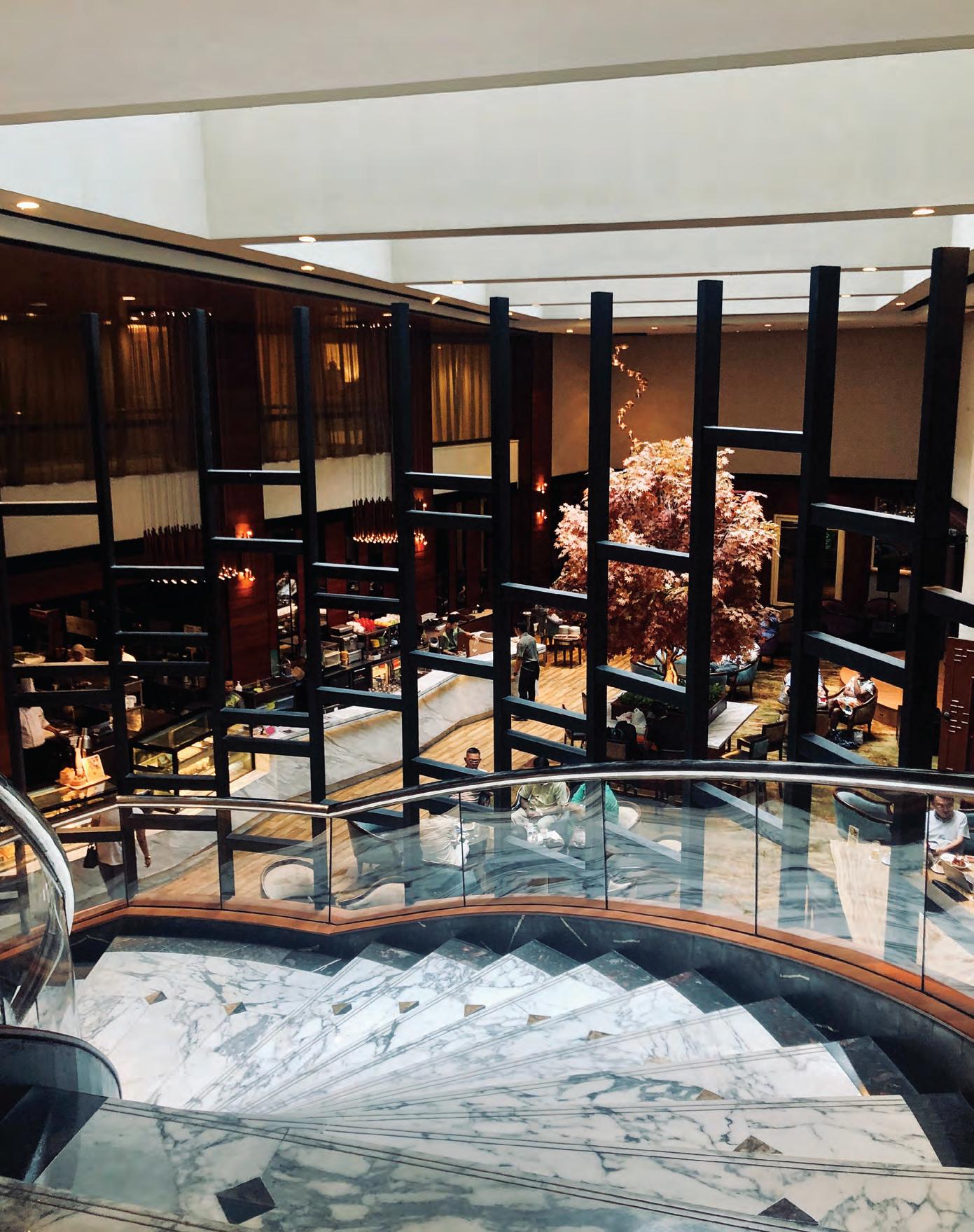
Let’s take a look at the top 5 hospitality design trends shaping the industry right now, and how operators can jump on board to attract new customers.
According to research by the Sustainable Hospitality Alliance, the hotel industry needs to reduce its carbon emissions by 66 percent per room by 2030 and by 90 percent per room by 2050 in order to keep carbon emissions at a sustainable level. Green design is a top priority right now for operators who have promised to meet net-zero commitments and want to draw in increasingly environmentally conscious customers.
Green design trends in hospitality today mean moving beyond the banning of singleuse plastics across your operation. This year it will also be about the triple bottom line, low-impact architectural design, serious climate commitments and making an impact across the whole supply chain. Customers want to know where everything from food to furniture comes from, what carbon offsetting or philanthropic activities your business is engaged in, and what you’re doing to manage waste and mitigate any negative output.
The question is: In an industry that has traditionally been unsustainable, how can sustainable design help your business to become a real, positive agent of change?

It’s time to minimise. Green design for hospitality operators in 2023 is all about stripping things back, cutting out carbon miles and going local. Hotels are removing unnecessary waste items from rooms, taking complicated unseasonal dishes off the menu, and focusing on quality over quantity.
Guests today want their hospitality to be local. Local organic produce in the restaurant, local artisans designing the furnishings, locally produced art objects and locally themed spaces, local staff showing them local attractions, and the use of natural construction materials like stone and wood that are unique and local to the area.
Traditionally relegated to hidden basement areas in most hotels, fitness and day spa facilities are taking front and centre stage right now as the wellness sector continues its unprecedented post-pandemic boom in hospitality. Wellness has become a big selling point for hospitality operators who are keen to attract a share of this growing market.
The wellness trend is reshaping the aesthetics, focus and functionality of architectural and interior design in hotels, as well as activities programming and the design of wellness products and packages.
Interior designers have been busy bringing wellness facilities out of the basement and placing them at the centre of hotel properties in locations with the best views and access to indoor-outdoor green spaces. Fitness equipment has found its way into private rooms, and wellness activities are now offered outside the hotel with guides taking guests into nature.
The scope of wellness products and activities on offer is also dramatically expanding from standard massage, mindfulness, yoga, and meditation packages. Trained nutritionists and wellness practitioners now guide a guest's whole-stay mindfulness experience through new personalised consulting programs offered by hotel brands such as Marriott and Four Seasons.
After a few years of pandemic lockdowns, consumers are nostalgic for simpler times and more contact with nature. Coupled with the sustainable eating trend towards local, organic produce and what we have in hospitality, 2023 is a big year for gardens of all shapes and sizes. Decorative herb gardens and organic kitchen gardens supplying produce for the restaurant on-site are trending in a big way. Urban restaurants and hotels that don’t have space for their own gardens are outsourcing local organic growing to local farmers and they are telling customers about those relationships.
It’s been an exciting year for the hospitality industry now that it is truly getting back into gear after the challenges of the pandemic. Trends from 2022, such as digital work and sustainable materials, continue to influence hospitality design trends this year, with green consumerism still expected to play a key role in the decade to come.
Indoor and outdoor green spaces are key for hotel interior design in 2023. Gardens that come inside via flexible indoor-outdoor spaces or big windows, gardens showcasing native plants and attracting local birds, green walls, green spaces for meditation and yoga, and greenery in the restaurant and communal spaces are all hitting the mark. Potted plants in rooms are more work for staff to keep alive but they are popular with guests and add to the home-away-from-home cosy appeal for long-term guests.

The latest data from 2022 shows that there are now approximately 35 million digital nomads working worldwide. Between 2019 and 2020 alone, estimates show growth in the number of digital nomads by a huge 49 percent for that year.
Remote and digital workers are still on the rise in 2023, replacing traditional short-term business and conference travellers, and that continues to have an impact on hospitality design. With the use of strategic design, hospitality operators can cater to this growing market of digital natives, encourage them to stay for longer and to spend more during their stay.
Simple design upgrades are effective for hotel operators to better cater to the growing digital nomad market:
• Separate work and sleeping areas in rooms with the desk placed away from the bed
• More wardrobe space
• Flexible suites and adjoining rooms that can be adapted for use as a lounge or private office, private fitness room, lounge or child’s room
• Offering comfortable coworking spaces and flexible workspaces with internet and facilities
• Upgrading lounge, cafe, lobby and communal spaces to provide comfortable leisure areas for digital workers during downtime
Staycations and long-term working holidays are on the rise in a big way, and that’s expected to continue into 2023. According to recent data from the vacation rental management platform Hostaway, trips longer than 28 days have increased by 106 percent since 2019.
With the rise of the staycation, many guests are now looking for hotel, dining and accommodation experiences that offer all the comforts of home but with more style and luxury.
They want to spread out across the different hotel spaces, connect with others in communal areas and feel at home across the whole property. Hospitality operators are investing in plush furniture settings, flexible communal spaces, and rooms set up with homey conveniences.
In 2023, staycation guests will be looking for comfortably luxurious hospitality designs, such as:
• Gorgeous and functional lobbies serve as comfortable communal spaces, complete with libraries, study corners, group dining tables and relaxation areas.
• Stylish sofas and comfy armchairs to curl up in just like at home but with a luxurious twist: think pastel wool and linen, rich velvet tones, warm wooden features, and tactile knitted textiles.
• Flexible spaces that offer different degrees of privacy, using attractive screens and modular dividers.
• Rooms with home-away-from-home cosy interior design and conveniences like kitchenettes, Netflix, crockery, extra blankets and stylish but comfortable hang-out areas.
Source: Torrens University



Sustainability has become a paramount influence on the decisions made by perceptive homebuyers. Yet, what was once confined to conscientious architectural design — incorporating elements like double-glazed windows or solar panels — now encapsulates a more profound pursuit of environmental living. Today, prospective homeowners seek out appliances that help conserve energy and save water, while delivering on refined aesthetics and functionality.
Melbourne’s Spotswood Yards is a prime example of how residential developments can fuse sustainability and premium urban living. “On this rare 50,000sqm of prime, masterplan real estate, Blue Earth is developing a lifestyle masterpiece of affordable, highly appointed apartments with exclusive access to luxury resort type resident amenities,” explains Doug Middleton, Blue Earth’s Sales Manager.
The selection of kitchen appliances was instrumental in creating interiors that would reflect the cutting-edge character of the development – and appeal to the young professional who is tech-savvy, health-conscious and refined. Therefore, the kitchen fit-outs had to be both sleek and visually appealing, and excel where quality and automation were concerned.
Furthermore, consistent with Blue Earth’s philosophy to future-proof their developments, it was paramount for the project to be equipped with appliances that use only the latest and most sustainable technology. Therefore, the selected products had to reflect the lifestyle of the development’s sophisticated clientele, while ensuring that Spotswood Yards dwellings were futureproofed for years to come.
With a range of products that combine environmental credentials, outstanding quality of finish, and the latest in cooking and storing innovation, Electrolux Group’s offering was an ideal match for this state-ofthe-art project. Electrolux Group provided a complete appliances solution through the AEG and Vintec brands, with all of the products featuring the latest in sustainable efficiency, sophisticated style and pragmatic functionality – fusing form and function perfect for contemporary apartment living.
All apartments have been equipped with AEG’s German oven with SteamBake features and a four-zone induction cooktop – both highly exclusive, commercial products – as well as the Italian-made, fully-integrated dishwasher with Air Dry and Light Beam on
Floor. The incorporation of high-end features – like the SteamPro, which automates steam cooking through an intuitive touch screen –both elevates and simplifies the more complex cooking experiences
The selection of appliances was completed with Glass Wine Cabinets from Vintec, a long-standing manufacturer of wine storage solutions. Engineered to store up to 50 wine bottles, the beautiful underbench units boast simple, Scandinavian design and speak to the shift that sees the health-aware residents consume less alcohol but invest more keenly in better quality wines. The units ensure that the wine is stored in a stable, UV-protected environment with good quality airflow, making cellaring premium alcoholic products possible in a compact apartment setting.
“Blue Earth buyers demand the latest technology, aesthetics, luxury and serviceability of appliances in their apartments, and we are able to satisfy that perfectly with the latest AEG range of appliances,” Doug sums up. “Blue Earth is particularly demanding of our vendors – from a product and supply point of view. The outcome with Electrolux Group has met all our demands and expectations.”
Following the recent federal budget, Anthony Albanese is having a second try at integrated urban development, through a new Urban Policy Forum. Its members are all leaders in the field. And the chair is Barbara Norman, Emeritus Professor of Urban and Regional Planning at the University of Canberra, Visiting Fellow at the Australian National University Institute for Climate, Energy and Disaster Solutions, and author of the new book Urban Planning for Climate Change. Ahead of the forum’s first meeting, she spoke to Hamish Mcdonald.
HAMISH MACDONALD : This is the second Urban Policy Forum to be launched, after the one in 2012 when Anthony Albanese was Minister for Infrastructure and other things. What happened in the meantime?
BARBARA NORMAN: That’s correct. There was the State of Australian Cities report series, the National Urban Policy Forum, and the whole urban branch in the federal government to support these initiatives. Due to the change of government in 2013, those initiatives gradually were dismantled. With the election of the new Labor government, the budget this year included re-establishment of that architecture to once again place the federal government in the space of urban policy and cities.

HM: What are your thoughts on the kind of issues you’ll be looking at from the start?
BN: We are yet to have our first meeting, which will be in July. The nature of the forum and the people in it reflect some of the key issues facing our cities. There are the ones we have been dealing with for a long time in planning and designing our cities; housing, transport, environment, open space. But there’s a number of newer issues: climate change, more active engagement with First Nations people, the digital economy of course, post-Covid. This is the range of issues that we now need to feed into that equation.
The membership reflects that: from the Property Council, strong representation from the built environment professions, the Green building Council, Indigenous representation, and planning of course. I’m very excited with the talent and experience of the forum. They are definitely leaders of their peak bodies, very experienced, and quite diverse. We need those conversations.
HM: This is kicking off amid a widely perceived housing crisis, and I guess there is a lot of pressure for people to somehow quick come up with ideas to resolve this. Is there a risk of this leading to us building the wrong kind of houses in the wrong places?
BN: Definitely housing affordability is a key issue. You only have to turn on any media today. Planning has a very important role. You’re talking to someone who’s been a Director of Planning and Land, a Housing Commissioner, and has Chaired the ACT Climate Council, in a long time of practice before I became an academic. So, I bring that background in looking at these issues, like housing affordability. I say that because clearly experts, specialists, people involved in housing need to be at the forefront of urban policy. The forum will take a wider view of how we develop our cities and suburbs. That is also very necessary in tackling some of these issues, whether it be housing affordability or transport and access, or climate change.
That wider view looking at where we develop and how we develop creates more liveable communities and suburbs. With affordable housing, access to services is just as critical in that equation. As we increase urban density and more housing options, provision of quality, green open space becomes very important, because we’re out-sourcing the open space that used to be the back yard to the public domain. Planning and the urban policy system can make a very positive contribution – not necessarily solving the housing challenges, but ensuring that we connect the dots, to make sure that where we locate affordable housing provides an environment that’s beneficial to those residents.
HM: With public housing, the old estates we see in Sydney and Melbourne are quite close to the city centre and therefore to jobs and services. Some have been sold off and new public housing on the fringes, which puts disadvantaged people at extra disadvantage. What you seem to be suggesting is that a lot of the new investment in public housing has to be woven in close to the centre. How we get over the NIMBYism that will result?
BN: Change is always a challenge. Planning can always make a positive contribution to engaging the community, which is an important point in the process.
I’m a strong supporter of demonstration of leading practice in design, for example in carbon-neutral affordable residential development or commercial development. It can bring very positive, creative examples of how we can bring these issues together in place. The second point is that cities are changing. More and more we’re seeing suburban hubs development. Through Covid, many people discovered their locale in much greater detail. There’s a greater appreciation, and possibly community demand coming through, almost a re-imagining of our suburbs, for a revitalisation of those neighbourhood centres. It comes back to social housing, community housing, affordable housing. It can be located across the city, but it needs to be supported by what I would call good precinct planning, that brings these dimensions together, by investment in good strategic planning, and good quality urban design. I think the future bodes well for that. The creation of the national Urban Policy Forum is a very positive step. It provides the forum to bring people together. We need to be working much more closely across the sectors, the disciplines, all levels of government.
HM: How do you see the question of valuecapture evolving, for investment in public transport, public amenity? This probably not a popular idea with the developers, but if we look at other countries, the development of public transport often precedes the building of large housing centres. Have we done enough of this in Australia?
BN: The forum will be an opportunity to hear from that wide range of people to explore ideas. It’s really about urban governance and financing the future developments of our cities and suburbs. I don’t have a fixed view about this, and I don’t think I should as Chair of this group. What I am interested in is people’s contributions about what is practiced around the world, any good examples that we can consider. That’s a very important part of the mix of conversation – yes! When we design our cities, we must look at the economic and productivity side, social inclusion, and environmental considerations – and cultural as well. I’m open to suggestions.
HM: Do you think our best architects have tended to stay away from high-rise, dense housing development? Apart from those by Harry Seidler, can we think of any great apartment buildings in Australia? Should our architects get involved in getting people a choice of much better apartments?
BN: There are some good examples! And interestingly they’re coming through the community housing sector. Nightingale in Melbourne is a good example, and our community housing in Canberra. Innovation is coming through, in a formative way, and does need support. I’m a past National President of the Planning Institute and I’m a strong advocate as I was then of active engagement by the built environment professions in encouraging leading practice and engaging in public debate to showcase the best examples. I see some glimmers of hope. Young architects are embracing carbon neutral. Buyers want to live in a healthy, green building. Some significant commercial buildings like New Acton in the ACT are good examples. The professional bodies for architects, planners, landscape architects, urban designers, engineers need to be working together. The head of the Australian Sustainable Built Environment Council has those players on its board, and the head of that is on the Urban Policy Forum.
HM: You mentioned Nightingale in Melbourne and New Action in Canberra.
Can you give any other examples of outstanding urban planning that we should look to as pilot schemes for our cities?
BN: We’ve done some really good work over the decades. As a young planner, I worked on the central area taskforce for the City of Melbourne. I was asked to do a housing survey of the central city, and I could literally walk to each resident’s residence in the city of Melbourne at that time. People did not live in the city centre. Our brief was to try and transform that. Whether it was recycling office buildings, changing fire regulations, a lot of detail had to be tended to for that to happen. People today can’t believe that was the case back in the 1980s. So that was a very successful model of transformation of an inner city over time, with a very strong commitment to an inter-disciplinary approach, people like Rob Adams, a full range of people who led that process, over 30 years. So, we can do things very well if we work together. Not just in our cities, but also in our regional towns. Orange in NSW is a vibrant hub today – a lot of employment there, at the hospital, and it’s become a tourism hub as well.
HM: How do we compare internationally?
BN: We should be very proud of what we’ve achieved. The challenge is: we are now at 26 million people. We are expected to grow to 40 million in the not-too-distant future, around 2050. We may have got away with business as usual to date, but we can see cracks appearing in our urban fabric. So, this is why, very importantly, we now need a more coherent national approach to how we plan and manage our urban development in the future. We are one of the few OECD countries that doesn’t have a national urban policy like this. I’m hoping we will join like countries in the very near future and start to collaborate at that level as well.
HM: Your new book is about urban planning for climate change. Can you sum up its message?
BN: It tackles the future challenges and opportunities for our cities and towns in a changing climate and recommends key actions for more resilient urban futures – carbon neutral development, building back better, meaningful engagement of First Nations people in the planning process and working with nature.

Architect COX Architecture
Builder SCI Consultants
Area 250sqm

Year Completed 2023
Conceived in a lockdown as a love letter to lazy summer days, Glory Days is Bondi’s answer to the nostalgic European holidays Australians adore.
The brief – ‘not another tourist café,’ but rather a space that expresses the duality of the city beach lifestyle that is Sydney and culminates in Bondi.
The interiors seek to connect Sydney with the world – paying homage to Jorn Utzon’s pink stone summer house in Mallorca.

Arched heritage windows are a constant reminder of the character of the Pavilion, where sunlight streams through and dances across the gloss and matte textures. Candid holiday vignettes taken ‘en vacances’ by Australian fashion photographer Adrian Mesko create a layer of domesticity and intimacy.
The exterior terrace is furnished with sandy stone tables, teak, and linen chairs, is a setting
for sunrises, hazy summer afternoons and slow sunsets.
The enviable task for a project like this is in the search for a balance between respect for a building and the creation of a space that’s ‘of its contemporary place’; somewhere locals want to be. And there’s little doubt that this balance had been lost in previous iterations of the Pavilion. There’s an inevitable aspect of subjectivity in any creative balancing act but with skill and sensitivity we sought to walk the line between respect and nostalgia, pastiche and homage and between accessibility and exclusivity.
When reviewing this work in both macro and micro, we’re pleased to have manifested both subtle and deliberate interventions that
express a coherent whole, one that evokes past glory but only to set the scene for a singularly modern Bondi experience.

The high-profile restoration of the Bondi Pavilion saw its heritage significance reinstated and has followed the shift in Bondi from catering for tourism to delighting the primarily white-collar demographic.
“The Bondi Pavilion is truly an iconic building and we’re excited to be opening our doors here with a design that is both fresh and respectful of this incredible heritage building. We’re saying every day is a vacation,” says Glory Days Owner, Aaron Crinis.


Breathe joined forces with Four Pillars Gin to create a new, immersive gin experience in their birthplace, Healesville.

PROJECT CREDITS
Architect Breathe Architecture
Year Completed 2022
(Large) Category Winner Four Pillars Gin Distillery has tripled its capacity for visitors, as the expansion delivers a much-needed new production space, an outdoor gin garden, tuckshop, dedicated gin shop, a custom-built bar, and events space cementing Four Pillars as the largest gin-focused distillery in Australia. The re-design helped Four Pillars become Australia’s first carbon-neutral gin business. 100 percent fossil fuel-free, sustainability is embedded, from the copper veil, the
100kW solar rooftop, the recycled masonry throughout to a restrained and crafted natural material palette. Ongoing waste minimisation was important to the project and all steel, concrete, and timber waste was recycled during construction and no excavation was sent to landfill. Gin is piped directly into the main bar from production through featured copper pipes that will see the site save 29 tonnes of glass per year.

Architect Breathe Architecture


Year Completed 2022

Located within the historic E Division building, BrewDog Pentridge provides a welcoming space inspired by the former airing yard that creating an inclusive experience for everyone.




Design Scanlan & Makers
Lighting Ambience Lighting
Building levels 2
Year Completed 2022
Restored interiors feature original bluestones walls paired with soft furnishings, cosy nooks, and heritage character in the old hospital of Pentridge and offer a nod to the history of the iconic site which was established in 1851. BrewDog Pentridge is spread across two levels, with indoor dining room and quiet den space on the ground floor, three function spaces on the first level plus a relaxed outdoor beer garden with BrewDog container bar.

FOLLOW US for more projects like this


The 90s launched the birth of underground music cultures, bright fashion, and David Hasselhoff along the beach. And now it has launched what has been described as Australia’s coolest burger joint - Royal Stacks.

IMAGES A dichroic finish also extends to the retractable windows, with both areas creating varying colours and visual impact throughout the day.
The space is a step into suburban and popular culture. Bold colours, graphic prints, custom murals, and fabric combinations come together to create an energetic and innovative space.
The space is a step into 1990s suburban and popular culture. Hallmarks include bold colour and graphic design across customised joinery and upholstery.

The front counter bar area features illuminated glass bricks customised with dichroic film, creating a dramatic entrance and mind-bending prismatic effects. A dichroic finish also extends to the retractable windows, with both areas creating varying colours and visual impact throughout the day. Neon signage with graphic elements extend to the bathroom where wallpaper and disco ball meet to create a mesmerising light effect later in the day when the afternoon light shines through the dichroic glass.





Architect Yaron Kanor
Lighting Ambience Lighting
Year Completed 2022
There is also 90s-inspired neon and signage with the graphical elements extending to the bathroom. The bathroom zone and hall enjoy wallpaper and a mirror ball that at the right time of day has a mesmerising light permeating through, an effect from afternoon light filtering through the dichroic glass.
Lighting is a showcase across the entire space with lighting design led by yours truly. The space features mix of customised lighting and vintage original lighting fixtures. Attention to detail was paramount with the team not only sourcing original fixtures from the 90s, but also tracking down original machinery tooling from the 90s to mould their own custom lighting.

Doug Southwell is an Architect and Director of Scott Carver who has witnessed the increasing demand for hospitality spaces and sensibility across multiple building typologies, including within the growth market of build to rent residential accommodation and commercial repositioning.

Tina Fox is the head of Interior Design at Scott Carver with extensive experience in a variety of hospitality work cross the UK, Europe and Australia NZ from casinos and cabaret to food and beverage venues.

Together, they headed the Scott Carver team that refurbished the Sydney’s iconic Theatre Royal.
In this exclusive interview, they go through the process of modernising this decades old, Harry Seidler-designed entertainment venue.
This podcast is brought to you in association with Stormtech proud sponsors of our 2023 Hospitality & Retail series of podcasts.
Episode 166: Doug Southwell and Tina Fox from Scott Carver Architects on the challenges & rewards of their redesign of Sydney’s Theatre Royal.
WORDS BRANKO MILETIC
1.ESTEEMED RECOGNITION:
As Australia's largest, oldest, and most respected sustainability awards program in the built environment, entering the Architecture & Design Sustainability Awards will position your project or product at the pinnacle of achievement within the industry.
2.INDUSTRY EXPOSURE: By submitting your entry, you gain the opportunity to showcase your work to a wide audience. Shortlisted projects receive coverage in Architecture & Design magazine, the authoritative publication in design and building ideas, as well as in widely circulated media releases. This exposure helps promote your company and its sustainability initiatives.
3.LEARNING AND INSPIRATION: Engaging in the awards allows you to learn from and be inspired by other sustainable projects in the industry. Accessible information about
each shortlisted project or product provides valuable insights into different sustainability initiatives and achievements
4.NETWORKING OPPORTUNITIES: Being shortlisted opens doors to networking opportunities. You'll be invited to attend the awards gala dinner, where you can raise your profile, connect with industry peers, and forge valuable relationships.
5.CREDIBILITY AND PRESTIGE: The recognition received through the awards not only provides wide industry acknowledgment, but also establishes your work as a benchmark for your peers and colleagues. It showcases the veracity, depth, and range of your design skills and those of your firm.
6.EMPLOYEE MOTIVATION: Participating in the Sustainability Awards is an excellent way
to acknowledge and motivate your employees. Winning a Sustainability Award boosts their morale and reaffirms their contribution to the company's success.
7.BUSINESS GROWTH OPPORTUNITIES: Winning an award not only attracts new business directly but also serves as external validation, establishing your authority and credibility within the architecture and design industry. It can also help in attracting top talent to your company.
In addition to these compelling reasons, the awards provide an opportunity to benchmark yourself against the competition, gain insights into industry trends, and create a memorable experience at the live awards event.
Ultimately, entering the 2023 Sustainability Awards increases your chances of winning an award and experiencing the excitement and industry recognition that comes with it.

This year attendees will experience the exceptional, engaging, and enthralling 2023 Sustainability Summit this November 9th, where they will be able to delve deeper into the concept of sustainability. Prepare to be enthralled and entertained while expanding their knowledge.

This event is designed to offer a perfect opportunity to reconnect with old acquaintances, forge new friendships, and stay updated on the latest developments in the field.
In 2023, the Summit boasts an impressive line-up of more than 40 speakers, including industry experts and exemplary practitioners, who will participate in five sessions. In addition, renowned keynote speakers and notable industry personalities will act as moderators throughout the day.
Just to refresh your memory, the 10 sessions are:
TOPIC 1: HOW ELECTRIC VEHICLES WILL IMPACT BOTH DESIGN & SUSTAINABILITY IN THE BUILT ENVIRONMENT
TOPIC 2: SENSE & SUSTAINABILITY
– HOW 3 WOMEN CHANGED OUR APPROACH TO SUSTAINABILITY
TOPIC 3: THE ROAD TO BRISBANE 2032: CREATING A LASTING LEGACY OF SUSTAINABILITY & SOCIAL AMENITY IN 21ST CENTURY SPORTS
TOPIC 4: THE RISE AND RISE OF MULTI-RESIDENTIAL HOUSING MODELS AND HOW THEY ARE CHANGING THE WAY WE LIVE
TOPIC 5: HOW TO USE BIOPHILIA TO DESIGN COMMERCIAL BUILDINGS THAT GENERATE 100 PERCENT OF THEIR OWN POWER
TOPIC 6: CREATING SUSTAINABLE OUTCOMES, WELLNESS AND PERFORMANCE BY USING INDUSTRIAL DESIGN
TOPIC 7: DESIGNING FOR RESILIENCE AND DISASTER PLANNING – WHY SUSTAINABILITY NOW ALSO MEANS BEING PREPARED
TOPIC 8: HOW TO DESIGN AND ESTABLISH SOCIAL AND SUSTAINABLE AFFORDABLE HOUSING FOR COMMUNITIES
TOPIC 9: WHY 10-STAR HOMES WILL BECOME THE NORM IN RESIDENTIAL DESIGN, BUT HOW TO GET THERE
TOPIC 10: SUSTAINABILITY
CERTIFICATIONS & COMPLIANCE - WHY THIS MEANS EVERYTHING FOR YOUR BUSINESS
Bringing together the foremost minds in the industry under one roof, the Summit will set the stage for the future of Australia’s design landscape. These conferences serve as breeding grounds for ground breaking ideas and actionable plans. Attendees will walk away with practical solutions to accelerate their progress towards decarbonisation.
Don’t miss out on securing your spot at the 2023 Sustainability Summit, featuring a jam-packed schedule with influential speakers. Seize this opportunity to witness firsthand the future of Australian design and architecture. Do not miss out to be part of this highly informative day by purchasing your ticket for the 2023 Sustainability Awards, where knowledge and enjoyment merge into a single, immersive day on November 9, where the Summit will take place both in person and online.
The 2023 Sustainability Summit brings knowledge and fun together in one day.
To get your tickets and be a part of the action visit www.sustainablebuildingawards.com. au/#s-summit.
Flying Alone: Re-development of the Moorabbin Airport Precinct



Flying Alone presents the Australian aviation industry as a cultural performance - uniting the Moorabbin Airport Precinct’s urban structure in a continuous theatre. This performative reading of the aeronautic industry was inspired by the memorialisation of local aviation innovator Lawrence Hargraves in the NSW-state commissioned Opera entitled ‘Lawrence Hargrave: Flying Alone’ by James McDonald and Nigel Butterley (1988).
Welcome to Sections2, where we highlight the very best section drawings from architecture and design students from our universities.
OPPOSITE Australia’s lyrical scoring of the aviation industry provided a cultural structure to order a series of interventions across the masterplan. The site is navigated using Opera’s terminology - commencing with the Prelude, off Centre Dandenong Road, and progressing into two Acts. The Russian Constructivists’ conception of theatre establishes a theatrical typology across the site. Performance is a social and mechanical engagement with space. The Constructivist theatre functions in the movement of spectators within a horizontal zone. The site’s two Acts follow a linear narrative in the resolution of an idea into a mechanical form.

LEFT The Prelude introduces the architectural tectonic of the site defined by a suspended roof and detached box, composed of the visitor’s information desk, retail space and a bike store. The engaged individual of the Constructivist theatre is mobilised in the movement of visitors across the site on bicycles.
TOP The first Scene is the Dreaming Station with views toward Moorabbin Airport. The rectilinear basket mobilised on four pneumatic columns simulates the first documented experience of a prolonged immersion in air in Versailles 1793. The dreaming of flight in Australia is painted on the ground as a runway pointing in the direction of visitors’ movement across the precinct. The date 1894 corresponds to Lawrence Hargrave’s first levitation on Point Piper tied to his Box Kite.
BOTTOM The second Scene is the Engine Modelling pavilion equipped with a workshop and parts display. Dynamism in the horizontal space between roof and floor planes is articulated by a kinetic display system composed of a three-cylinder technology appropriated from Lawrence Hargrave’s Air Compressor Rotary Engine.

BELOW The precinct’s second Act is composed of two Scenes. The Testing Site on the northern block housing a restaurant and demonstration area geometrically leads visitors to the precinct’s Finale entitled Taking Flight. This final building, containing an airplane museum and education centre is a chorus-like amalgamation of all architectural elements from the preceding pavilions. The experience of this building is documented in three-detail sections. Visitors enter a compressed reception before funnelling into a thin ascending corridor with a glass ceiling. This space is focused on the sky. Visitors arrive at the museum’s display in mid-air amongst a choir of mobile planes. Movement is designed in the Finale’s unequal planning of conditioned spaces, façade system and perimeter columns.
INNEKE WAGNER is studying a Masters of Architecture at the Melbourne School of Design with an interest in methods of architectural generation. This creative concentration draws upon theoretical and object-based research. As implemented in her masterplan proposal; Flying Alone, Inneke employed a 1968 Mamiya C33 twin lens camera to experience and document the precinct’s existing conditions. The camera’s

square-cropped way of seeing mechanically disengaged her mundane experience of urban space. The elongated perspectival structure of the Moorabbin Airport Precinct was heightened by the 20th century technology’s 120mm frames. This mechanical portal informed her project’s focus on procession, lines of sight and the visitors’ experience at speed across a series of architectural interventions through the industrial precinct.


Designed by the renowned architectural practice Woods Bagot, the Meadowbank Education Precinct in Sydney is a visionary community engagement hub that redefines the architectural potential of educational facilities. Anchored by the principles of functional design, this state-of-the-art concept school is more than just a place of learning—it’s a transformative experience that fosters a sense of belonging and a deep connection to the surrounding landscape.
Finding metal ceilings that would reflect the diversity of colours and design themes meticulously curated by Woods Bagot was one of the crucial aspects of this project. X-clusive Group Australia Pty Ltd, the appointed commercial interiors company, recognised the unparalleled flexibility and modern aesthetics offered by durlum, which led them to engage Network Architectural, the exclusive distributor of durlum.
In close partnership with durlum’s designers, Woods Bagot and X-clusive Group Australia Pty Ltd created a range of bespoke metal ceilings that perfectly matched the design brief, specifications and budget requirements.

As a result, the Meadowbank Education Precinct boasts an impressive 6,500 square metres of bespoke metal ceilings, with each piece carefully chosen to meet the highest standards of concept architecture.

This outstanding commitment to the design vision translates into an eye-catching array of visual elements – such as passageways and outdoor learning areas adorned with vibrant 2mm multi-colored bespoke corrugated aluminium panels that flawlessly match the feature brickwork; or the tranquil cloud pattern created with the 1mm pressed stainless steel panels to enhance the outdoor learning areas. Similarly, the refined design of the grand gymnasium and community hall commands attention with their striking 3mm large-format aluminium S7 system mesh panels.
Naturally, the metal ceilings solutions aren’t just aesthetically stunning. Engineered to stand the test of time, the systems boast durable coatings that protect against the elements while ensuring ease of maintenance and cleanliness. Moreover, the metal ceilings undergo rigorous fire-safety testing, fully complying with Australian Standards and Building Codes,
prioritising the safety of students and staff. On top of that, each component is fully recyclable, reflecting the project team’s commitment to sustainable practices and environmental stewardship, and highlighting the future-forward profile of the undertaking.
The collaborative efforts of Network Architectural, durlum’s design teams, Woods Bagot, and X-clusive Group Australia Pty Ltd ensured that the metal ceilings seamlessly integrated with the existing structures, and despite the challenges posed by the pandemic, the supply contract was successfully fulfilled on time and within budget.
As the exclusive distributor of durlum metal ceilings in Australia, Network Architectural leads the industry with its innovative and versatile solutions. With extensive experience in a variety of building projects, they have proven their commitment to delivering beautiful, functional, and sustainable spaces. This project – a masterpiece of design and a place where education and inspiration intertwine – is a testament to their unwavering desire to deliver only the highest-quality outcomes that are as relevant today, as they will be in the future.

Increasingly, in addition to the above list of requirements, we can add the recurring demand amongst specifiers for wall and ceiling materials that are not just recyclable, but produced with carbon abatement in mind.
In response leading players like Deco Australia, a manufacturer of aluminium architectural building systems and finishes, have moved their operations in more environmentally friendly directions.
Specifically, the company has partnered with Capral Aluminium to supply a product called Local Green lower-carbon aluminium. Deco is leading the way by being the first to commit to switching all their Capral aluminium extrusions to the more environmentally friendly material.
Explaining the move, Richard Hamber, General Manager Deco Australia says: “The switch to Local Green aluminium will also directly support our customers across the architectural and building industries by supplying aluminium building products made from responsibly sourced, lower-carbon aluminium, helping them to achieve their own sustainable initiatives and outcomes.”
The company’s latest products, which are suitable for hospitality applications include
a new QuickClick batten, within the DecoBatten range, which has a slimline profile and is suitable for interior walls and ceilings; DecoPanel, which is suitable for a wide range of applications, including wall panels and linings, cladding, architectural screening, wet area lining, and even acoustic paneling; and DecoSplash, which is a practical and visually appealing wall lining solution.
In another development, stone cladding products, including those available from Haus Collective, are becoming increasingly popular.
While increased global supply has seen international players extend their market into places like Australia based on demand in the residential building sector, the materials are also finding use in hospitality applications. With the increased incorporation of elements such as render and natural timber screens in restaurants, bars and so forth, there has been a subsequent need to break these elements up. In these cases, natural stone cladding, with its inherent warmth and depth, has proven a viable solution.
Ensuring the design aesthetic and the appearance of solid stonework, but without the high cost, cladding of this type can be installed on light weight construction materials, both on the inside and outside of hospitality projects.
Elsewhere, products like the Silhouette range of decorative wall panelling by Easycraft fill an obvious gap in the market. An intricate, detailed product that is suitable for a range of applications, including within hospitality settings, it provides depth and texture wherever it is installed.
Cost effective and easy to work with, the range aims to inspire ‘material lead’ design, providing designers with the ability to incorporate natural shapes and shadows through hard-wearing durable materials. As used at Alba Cooking School, a project by H&G Designs and Studio Shibui, the Silhouette range is available in three styles – Convex, Cove, and Channel.
Featuring a free-flowing form punctuated by subtle uniformity, Convex has a tactile nature that plays with light to produce organic shapes and shadows.
When it comes to interior walls and ceilings, there are a few things that all hospitality venues have in common. Whether the setting in question is a café, a restaurant, a music venue, or a hotel, all require surfaces of this type that are non-stain, non-scruff, non-flammable, and acoustically sound.
WORDS MATT MCDONALD
Meanwhile Cove, which was inspired by the Australian coastline, combines undulating curves with dramatic ridge lines; and Channel features strongly defined channels spaced between unassuming plateaus.
As ever, acoustic considerations are important in hospitality environments of all types. According to Atkar Group, when considering architectural and acoustic panelling systems it is becoming increasingly important to focus on solutions rather than a copy and paste process.

As Nate Ward, National Marketing Manager Atkar Group, points out, local production, environmental/fire/acoustic accreditation, unique designs rather than off-the-shelf products, are more popular than ever.
“Having internal expertise in fire ratings and being able to recommend whole-project fire rating solutions has been a great asset to our customers to date,” he says. “Our clientele expects an end-to-end solution and have no room for technical errors that are so prevalent in the design industry.”
Atkar offers a broad range of architectural acoustic solutions, including Au.diMicro, which is an attractive, real timber veneer designed to minimise the ‘Swiss cheese’ appearance of
some perforated panels; and Vogl, a monolithic acoustic ceiling option, which features a unique installation system that negates the common issue of cracking caused by using compounds and fillers.
According to Ward, the importance of overall acoustic expertise should never be underestimated.
“Designers and architects come to us with different levels of formed ideas, and Atkar’s combination of experience, design, building expertise and technical knowledge greatly assists them in developing their projects. We pride ourselves and take delight in partnering with our clients, rather than just selling a product,” he says.
Within hospitality applications, there has been a notable surge in the utilisation of robust materials like aluminium and fibre cement, complemented by innovative finishes such as woodgrain foils and printing techniques that emulate the appearance of natural timber. Not only does this material genuinely resemble timber, it also surpasses expectations in terms of non-combustibility and moisture resistance, qualities that hold real significance in hospitality establishments.
In line with this trend, DecorSlat AliSorb, the newest addition to the Slat range by Décor Systems, stands out for its durability and noncombustible properties, making it safe for busy hospitality venues. Moreover, its acoustic lining has excellent sound absorption capabilities, making it an ideal solution for optimising the acoustic environment.
Likewise, the supplier’s DecorLux product, made of perforated fibre cement, has a new finish available. The captivating print finish strikingly emulates the appearance of genuine timber veneer.
The advancements in printing technology have enabled a seamless integration of aesthetics and performance, allowing both aspects to flourish in perfect harmony.
According to Woven Image, a leader in sustainable acoustic finishes, the growth in novelty and unique artistic expressions is increasing, along with spaces that provide a homely experience. Venues are using unique surfaces and colour to support such design ambitions.
Designs like Echopanel Longitude provide a shadow line that can mimic wood panelling, while the company’s Echopanel Palace references art deco through smooth curvature.
Industry leaders Rondo & Gyprock have collaborated on white papers to help professionals understand the regulatory requirements surrounding the installation of fasteners as well as fire resistance levels for walls and ceilings systems.




As seen in the Bathers Pavilion, Echopanel Longitude in navy, was able to complete the nautical look while dampening sound reverberation, providing acoustic comfort in a busy space. Similarly, in The Growers, Echopanel Longitude provided an elegant and subtle ceiling feature, matching surrounding colours. Its straight lines provided depth to an otherwise bland and noisy ceiling.
Italian restaurant Lombra, on the other hand, used Woven Image’s in-house baffle design Viaduct to present their customers with a ceiling feature reminiscent of Roman architecture. In this case, the baffles helped to reduce sound reverberation while increasing speech intelligibility in the space, making visiting the restaurant a more enjoyable experience for customers.
Often the need to rectify the acoustics in hospitality spaces only becomes apparent once a business is operational. Frequently this comes about because of patron complaints. Although it is possible to apply acoustic treatments in such cases, it can be costly.
“There are some interesting ideas put forward to negate these costs – such as sticking acoustic panels underneath dining tables which serves only as a hygiene hazard and is not effective in reducing noise reverberation,” says Rob Jones, Technical & Development Manager at Autex Acoustics.
“Alternatively, applying panels to the ceiling, which, aside from detracting from the space's aesthetic, also requires adhesives with odours that can take weeks to dissipate.”
According to Jones, therefore adhesive-free acoustic systems that don’t require several specialist tradespeople and add to the space's aesthetic are ideal for hospitality settings.
“Clip-on panels that can be fitted quickly and lightweight suspended acoustic baffles and clouds are becoming go-to solutions. They can be fitted after hours with minimal disruption to business operations,” he explains.
Products within CSR Martini’s Deco Collection represent some of the latest innovations in the acoustic market. Available in Australia from Himmel Interior Systems, products in the range include a patented suspended acoustic blade system that offers high performance acoustics but also has the capacity to reduce Installation time by up to 20 percent.
The collection also includes a high performing range of 3D wall tiles. Available in five designs and 22 colour options, the tiles provide the flexibility of design freedom to change the designs whenever necessary.
To support these products, Himmel Interiors Systems, in association with Acoustic Directions, have created an RT Calculator, which is intended to assist those who, need to understand ways to improve acoustics.
Elsewhere, products like Creason and Createx, which are available from Siniat, have the extra benefit of having air-purifying qualities. As such, they are ideal for hospitality environments in which there is a lot of coming and going, and therefore the potential for poor air quality.
According to the distributor, the acoustic performance of Creason and Createx is achieved through a combination of sound diffusion (whereby reflected sound energy is spread out) and sound absorption (whereby sound energy is removed as it travels through the perforation
holes and acoustic fleece backing).
As installed at Sydney’s famous Bondi Pavilion, Createx is manufactured with high quality, ultrasharp perforations in a variety of continuous perforated patterns for a seamless finish.
Meanwhile, Creason comes in two perforation patterns and is ideal for use in a range of internal applications where controlling the sound reverberation time is required. In addition, it can also be used at the top of internal walls (above traffic areas) where control of sound absorption and reverberation time is required.
The final word goes to Ecko Solutions, whose seamless acoustic ceiling was used to great effect by Cera Stribley Architects at St Hubert’s Winery. When guests step into a setting such as this, their expectations extend beyond just the visual appeal. They anticipate a sensory journey that engages their ears as much as their eyes. Ecko Solutions Seamless acoustic ceiling provided the means to curate this auditory experience, ensuring that the soundscape remains harmonious and pleasurable.
In this case, the architects worked in partnership with the Ecko Solutions team to create a unique custom concrete look finish throughout the dome shaped ceilings.
Unlike conventional visible treatments like acoustic panels or baffles, seamless acoustic treatments blend seamlessly into the interior design. In this way, by integrating acoustic solutions discreetly, the architects had the freedom to prioritise aesthetics without compromising on acoustic performance. This unobtrusive elegance that resulted allows the space to maintain its visual charm while delivering exceptional sound quality.
SUPPLIERS Atkar Group architectureanddesign.com.au/suppliers/atkar Autex Acoustics architectureanddesign.com.au/suppliers/autex
Decor Systems decorsystems.com.au Haus Collective architectureanddesign.com.au/suppliers/haus-collective Deco Australia architectureanddesign.com.au/suppliers/deco-australia Ecko Solutions eckosolutions.com.au Woven Image wovenimage.com/en-AU Easycraft easycraft.com.au Himmel Interior Systems architectureanddesign.com.au/suppliers/himmel-interior-systems Siniat architectureanddesign.com.au/suppliers/siniat
As ever, acoustic considerations are important in hospitality environments of all types.
Commissioned by the Public Transport Authority of Western Australia and designed by GHD Woodhead with Weston Williamson + Partners, the Forrestfield-Airport Link was one of Western Australia’s most significant public transport projects. It has seen Perth’s eastern suburbs linked by rail for the first time, connecting the railway east of Bayswater to Forrestfield, with 8.5km of new tracks, 8km of which are in tunnels.

Siniat were engaged to provide engineering services and supply premium products for the project, alongside their sister brands, Promat and Kalsi. “The extensive underground infrastructure includes stations, twin-bored tunnel, cross passages and egress shafts and fire safety was absolutely critical,” says Mark Hutchison, Siniat’s Sales Manager in WA. He explains that the required FRL was mainly 120/120/120, which made Siniat’s offering perfect for this project. “We provided various products, including fire-resistant plasterboard, to help meet the required fire rating.”
In addition, the original design specified fibre cement sheeting as an impact resistant, noncombustible insulation material in the walls, ceilings and floors of the tunnels, ingress and egress shafts. Following several meetings between Mark and the Salini Impregilo-NRW JV Project Architect in the design and construction stage, the duo redesigned the wall and ceiling package. “Fibre cement was replaced by Siniat Trurock HD, which is a safer and more sustainable option,” Mark explains. “We also used products such as Promat’s Promatect for fire rated floor and ceiling lining applications.”
The benefits of the Siniat’s Trurock HD board were almost immediate. “Trurock HD is far easier to work with as it can be cut without the use of power tools and therefore creates no dust,” says Mark. “Plus, the product’s durability, water resistance, fire and acoustic properties assist in reducing layers and simplifying wall types, while still providing the required water resistance, impact, fire and acoustic performance criteria.”
“Trurock makes life a lot easier than cutting fibre cement,” says Enzo Scarvaci, Director of the main ceiling and wall contractor, EXZO. “Using a product with the same impact ratings for what was required on the project just made life a lot easier. You also eliminate a lot of the cracking of the joints, which you tend to find when you flush out fibre cement. And the quality of the finish looks a lot better than a fibre cement finish, where you get a lot of imperfections in the board.”

“In addition, by combining both Siniat plasterboard and metal framing components we were able to offer a full system warranty on the Siniat wall and ceiling systems providing peace of mind for the main contractor and client,” says Mark.
“Instead of going to five different businesses, trying to get warranties for individual products, I was able to just get a single warranty that covered everything,” says Enzo. “It saved time, money, and complexity. There’s so much benefit to working with Etex brands like Promat and Siniat. I’d definitely recommend them to anyone.”

The latest batch of laminates and solid surface materials to hit the market include some real winners for the hospitality sector.


Now that the Covid-19 is largely behind us, it appears that one of the few positives the pandemic delivered was an increased emphasis on hygiene.
For example, Laminex, an organisation with a track record of commitment to innovation and the latest in product development, announced in May 2023 that after additional testing, its innovative range, Protec+, is now certified for Covid resistance.
As specified at Robata, a Japanese grill restaurant located at the corner of Exhibition and Flinders Street in Melbourne, Laminex Protec+ is an antimicrobial technology that inhibits the growth of a variety of microbes, such as, bacteria, fungi, mould, and Covid-19. This additional layer of protection means that the creation of safer, cleaner environments is possible anywhere.
The active ingredients in Protec+ are silver ion additives, which inhibit the growth of bacteria, fungus, and mould, thus mitigating the risk of potentially harmful growths. Crucially, these additives are deployed into the resin used to produce the laminate, so they are integrated into the finished product and cannot be wiped away or otherwise depleted. As a result, Protec+ continues to provide the same level of protection for the life of the product.
Elsewhere, and continuing the healthcare theme, the presence of quartz crystalline silica found in some engineered stone products and its links to serious health conditions, including silicosis, has seen some changes in the market. Austaron Surfaces, for example, has reported increased interest in its Staron Solid Surface designs, which is not just silica free, but also Group 1 Fire rated to AS5637.1 (AUS) & Group 1S Fire rated to C/VM2 (NZ).
Originally developed for the benchtop market, Staron has been used in diverse range of application and sectors, including hospitality.
According to the company, one of its standout features is its joining method, which ensures superior strength when bonding multiple pieces together. This technique seamlessly conceals joins during the manufacturing process, eliminating crevices that could trap dirt. By combining this attribute with its thermoforming properties, Staron is the ideal foundation for achieving limitless design possibilities.
An additional advantage of incorporating Staron into projects is its surface restoration capability.
When other materials become worn and tired, requiring replacement, Staron only needs a
simple re-sanding to restore its appearance to a brand-new state.
Unlike timber and stone materials, these solid surfaces do not require any sealers, reducing maintenance requirements and costs.
Natural stone has remained a favourite amongst architects and designers for years, particularly because if its capacity to create one-of-a-kind interiors. According to Tony Victor, Director of CDK Stone, the hospitality industry is no exception.
“We are finding a wide range of marbles and quartzites being specified on a regular basis within the hospitality industry, bold colours like Rosso Levanto and Calacatta viola along with your more traditional marbles, Bianco Carrara are still some of the more popular options being used,” says Victor.

“The use of natural stone on dining tables makes every table a unique piece within the restaurant as being used as features on bars, splashbacks, and cabinetry with the spaces.”
Making use of bold, red coloured stones like Rosso Levanto Marble and Calacatta Viola Marble, Fugazzi produces a riveting experience with such stone decorating the entirety of the restaurant.


With guests dining amongst works of art that each have their own personality and appearance, this is a one-of-a-kind experience that cannot be replicated by any other.
As Victor explains, CDK Stone is constantly looking to add new and exciting stones to its range.
“Once we find these new and exciting options, we complete extensive and rigorous testing to ensure they meet the demands of the Australian market prior to importing them,” he says.
Another product type worth considering for hospitality applications is High Pressure Laminate (HPL). In fact, according to George Fethers & Co., the general durability, scratch, dint, and moisture resistance of HPL makes it the most suited of all laminate classes for hospitality applications.
Significantly, George Fethers & Co. offers all 16 of its laminate varieties in both Low Pressure Laminate (LPL) and HPL options, known as Cellupal Plus and Cellupal.
According to the company, HPL’s main disadvantage when compared to other less durable forms of laminate is that the melamine resin in the top layer of the product reduces its aesthetic appeal.
Having a dual offering allows the designer to opt for the more refined LPL with its Polyurethane coating and 3D wood grain texture on low-wear areas such as ceilings, overhead cupboards and wall panelling in
low traffic areas and then utilise the HPL on horizontal surfaces, bar fronts and wall panelling in high traffic areas.
As Mark Thomson, General Manager of HVG Decorative Building Products points out, surfaces that are easy to clean remain popular. “From our perspective at Interzum [the furniture supplier sector and interior design industry event at Cologne in May] we saw a strong focus on matte and finger proof decors and finishes. This trend is still well and truly alive,” he says.
According to Thomson, HVG’s Traceless Collection of laminates, which was developed on the back of needing a clean and less maintenance product offer is a good example of this. Laminates in the collection offer designers an ultra-matte texture that is ideal for hightouch areas in any commercial space.

The unique technology ensures that finger marks are almost never seen thereby substantially reducing the effort required for care and maintenance.
Available in two types – TS Traceless Standard for vertical applications, and TP Traceless Premium for both vertical and horizontal applications – these highly durable yet smooth surfaces are impact, scratch and heat resistant.


As ever, when considering surface materials, the key priorities include sustainable, durability, and hygienic. On top of that, products should contain no dangerous chemicals, be easy to maintain and be suitable for use with both vertical and horizontal applications, and therefore lend themselves to the creation of attractive, unique spaces.
Nover, a wholesale distributor of quality products to the kitchen, joinery, and furniture manufacturing sector, offers products that fit this bill perfectly. According to the company, two of the most popular of these are Evostone and Fenix NTM.
Comprised of 33 percent polymers and 66 percent natural minerals, Evostone features colour all the way through its 20mm thick pre-finished slabs. Waterproof and unable to penetrated by harmful germs and bacteria, it is available pre-finished and ready to install. Easy to cut and trim, it features zero silica content and comes with a 10-year limited warranty.
Meanwhile, Fenix NTM is billed by the company as the original Nanotech matte material for interior design. Suitable for vertical and horizontal surfaces, it is characterised by low light reflectivity. Featuring anti-fingerprint material, it also features a capacity for thermal healing of superficial micro scratches.
Porcelain surfaces, which been around since at least the 16th century BC, are at the forefront of sustainable, high-performance solutions for interior and exterior hospitality fitouts.
Caesarstone introduced its first collection of porcelain in late 2022, with a collection of 17 designs produced collaboratively by the brand’s inhouse design team and Li Edelkoort.
This ‘Light Collection’ comprises marble, stone, and concrete-inspired designs in either a Honed or beautifully tactile Ultra Rough Finish. The colour palette of this initial offering ranges from the virtual pure white of Whitenna through warm whites, taupes, greys, and russets to the dramatically striated surfaces of Archetta and Striata, and the patinaed concrete surface of Concrita.
In keeping with Caesarstone’s commitment to sustainability, Porcelain carries the Greenguard, HPD (Health Product Declaration), Green Building Council Australia Green Star certificates of approval.
While more designs will be added incrementally, this initial entry into the porcelain surface sector aims to achieve the ‘impossible dream’ by combining beauty and resilience in a 100 percent natural material.
According to the company, extreme heat resistance; UV resistance; scratch resistance; stain resistance and general chemical resistance place this virtually indestructible surface at the forefront of design choices for food preparation areas, wet areas, and outdoor venues – not only for worktop surfaces but also freestanding furniture.
SCF Interiors, a specialist in residential and commercial design, as well as the fabrication and installation of solid surface products, reports a trend towards the use of solid surface for tables in hospitality, on the grounds that they are not just easy to clean and maintain, but also very hard wearing.
An example of such a project in which SCF Interiors was involved is Grana restaurant at Hinchcliff House in Sydney. An Italian-inspired restaurant with an open design by SED, it features an 18-metre benchtop that winds through the restaurant.

The unique seamless joining ability of Corian solid surface means that the entire benchtop is seamless.
In the wake of COVID, effective hygiene is a key consideration across the hospitality sector. On this score, Meganite AcryMed, available from Forestone, is a wise choice. In accordance with ISO 22196 and JIS Z 2801, it has been tested to be 99.9% effective to reduce bacteria and fungi within 24 hours. The AcryMed technology protects the product itself against stain and odour-causing bacteria.
According to the company, the antimicrobial additive that Meganite AcryMed incorporates is integrated into the raw materials during production, and works through the whole body of material.
SUPPLIERS George Fethers & Co gfethers.com.au Forestone architectureanddesign.com.au/suppliers/forestone
Ceasarstone caesarstone.com.au Austaron austaronsurfaces.com Laminex laminex.com.au
HVG Decorative Building Products architectureanddesign.com.au/suppliers/hvg-decorative-building-products
CDK Stone cdkstone.com.au SCF Interiors scfinteriors.com.au Nover architectureanddesign.com.au/suppliers/nover
As used to great effect at the newly-built Grand Bayan Hotel in Tainan, Taiwan – in the restaurant, the beverage service area, the Sushi Bar, the washrooms, and elsewhere – the nonporous surface material is chemical-resistant and easy to clean. Environmentally stable and thermoformable, it will not warp, rot, splinter, or delaminate.
Meganite solid surface can be used as shelving and bench top to provide a durable and functional solution for furniture. The solid surface can be cut and shaped into various sizes and shapes to fit the specific needs of the design.

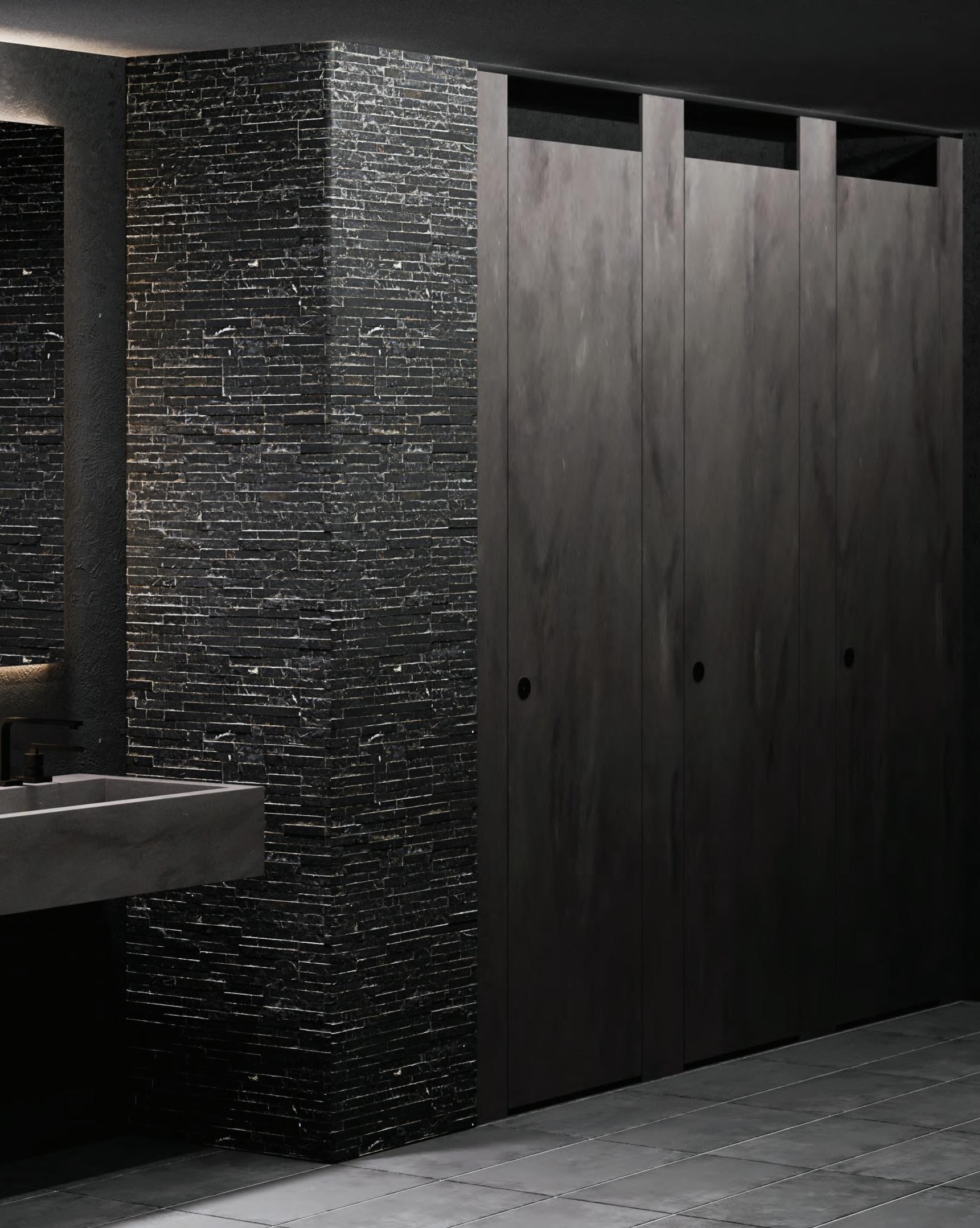




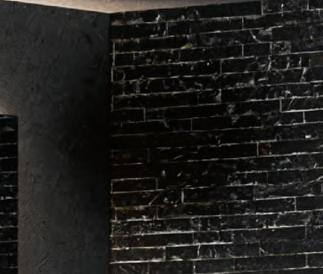



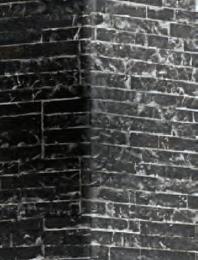



Harmonise or contrast colours flawlessly with Corian® toilet partitions, urinal dividers and washplanes. Embrace unbeatable vandal and graffiti resistance, along with unmatched privacy through our innovative door design.


Lighting is often something the average person takes for granted, but as any architect or designer is aware, it makes a huge difference – often changing the entire mood of a room (and the people in it).

For example, access to adequate natural lighting (or alternatively, circadian lighting) can help improve our mood and productivity, while also encouraging healthy sleeping patterns because it keeps our sleep-wake cycle in sync with the natural environment. On the other hand, excessive exposure to harsh artificial lighting can cause us to exist in a constant stage of lowgrade jetlag, throwing off our body clock and making us tired and irritable.
Natural lighting is ideal, but depending on the site or type of build, this is not always possible. In a hospitality context for example, there are many instances where natural lighting is either not possible or simply not preferred due to the nature of the space and its use.
Where natural lighting is preferred, architects and designers may wish to consider a solution like Solatube, which is a technologically advanced skylight system. What separates it from a traditional skylight is the use of a

patented daylight-capturing dome lens that redirects low-angle sunlight for maximum light capture, rejects overpowering summer midday light and provides consistent daylighting throughout the day.
According to the company, the solution’s tubing is made of the world’s most reflective material, which offers the highest specular reflectivity (up to 99.7 percent) and provides the purest possible colour rendition, so colours are brighter and truer. It also focuses on delivering the visible spectrum of light, minimising transfer of the infrared spectrum (aka. heat).
The benefit of using this solution in a hospitality application is that it provides safe natural light, promoting healthy circadian function while avoiding damaging UV rays and excess heat load. The result is a comfortable hospitality space that functions as a better workspace for employees, while also providing an environment that encourages patrons to stay longer.
One key example of this product’s application is in Oak Hotel, located in the Far North Queensland city of Cairns. Designed by CA Architects, the project was a five-storey, 76room boutique hotel with a rooftop bar and garden, built above existing retail tenancies. The objective was to deliver daylight to internal rooms with no windows to the outside.
The proposed solution was to provide lighting ducts with internal false windows, through which daylight would be cast into the internal rooms. Following discussion between Solatube Australia and the project’s architects, it was decided that the design would utilise Solatube’s SolaMaster Daylighting Units with 99.7 percent spectralight infinity tubes to deliver daylight from the rooftop level to the first floor and the associated floors above.
Specifically, the company’s SolaMaster 750DS systems were chosen as the best solution to meet the brief.
Natural lighting is ideal, but depending on the site or type of build, this is not always possible.PREVIOUS Aglo Systems’ Casambi wireless smart lighting control system in the event gala space at The Star Gold Coast Events Centre. BELOW Solatube’s skylight systes at the Oak Hotel.
This required the use of tubes up to 17m long, which were enclosed within the fire-rated ductwork, allowing daylight to be delivered through these long tubes, into the ducts and through the false internal windows in the rooms.
In hospitality applications where natural light is not possible, you may consider the use of BoscoLighting’s aluminium extrusion linear lighting, which consists of aluminium extrusions with integrated LED strips that provide a continuous source of light. According to the company, the key benefit of the aluminium extrusions is that they act as a heat sink that dissipates the heat generated by the LEDs, helping to prolong the lifespan of the lighting system.
This product also offers a diverse selection to meet different design requirements, with over 100 types of aluminium extrusions available and multiple options for each type. This extensive range allows designers to choose the most suitable extrusion profile for their specific application, whether it's recessed, surfacemounted, or pendant lighting. The company also provides customisation services whereby customers can specify the desired length, colour, and other parameters to ensure the lighting seamlessly integrates with the design concept.
Aside from its flexibility in terms of design options, the energy-efficient nature of LEDs is a key benefit for those considering the use of aluminium extrusion linear lighting in a hospitality space. Not only is it environmentally friendly, but it’s also cost-effective, reducing energy consumption and maintenance requirements.

A good example of this product’s use is in Western Sydney University Library Cafe, where the linear extrusions were employed to provide functionality while enhancing the ambiance of the space. This involved the installation of 104 linear extrusions, each custom-made to a length of 1.2 metres and finished in black. The extrusions were surface mounted in the ceiling, which allowed for a seamless integration that fit with the cafe’s modern design aesthetic.

According to the company, the customisability of the extrusions was essential to meeting the design brief. The ability to specify the length of the extrusions allowed for a precise fit within the café's ceiling, creating a seamless appearance. The black finish was also well-suited to the cafe’s contemporary aesthetic, resulting in a cohesive and visually appealing space.
If you’re looking for something extremely inconspicuous, one option to consider is Brightgreen’s Mini LED downlights. According to the company, it was in 2008 that they designed the world’s first downlight that matched 50 halogens in output. The Mini version is 80 percent smaller, which not only allows it to disappear into the architecture but also requires 80 percent less energy to manufacture, making it the lowest carbon footprint per lumen of any light on the market.
Compared to the typical downlight, this product is arguably better suited for use in hospitality design. This is because the typical downlight is large and visible, meaning they must be laid out uniformly in a lighting design. This can mean compromising on highlighting areas like tables, bars, artwork and other key design features. Visually, Mini downlights disappear into the ceiling, allowing you to lay out the lights to match the fitout of the space and its optimal customer journey. Made to suit moody spaces, there is even a night shift option that transitions from warm (3000k) to ultra-cosy (1800k) as it dims on a standard dimmer switch.
On the other hand, if you are looking for some accent lights to add to the aesthetics and functionality of the space, you may wish to consider LightCo’s Revolve wall light. This product is a luxurious but minimalistic wall light that casts a soft light downward, while also having the ability to rotate 90 degrees in a perfect arc from the wall for maximum flexibility. The rotating mechanism makes it easy to direct light, providing both ambient and direct lighting for diners.

This product can be observed in Poulette Chicken Rotisserie, a Forster-based restaurant with interiors designed by Melissa Collison Design. The brief was to design a restaurant space evoking French retro charm and classic nostalgia. In response, Collison designed a deep red and ocean blue bistro-style restaurant with a stunning tessellated tile floor. Several LightCo lights were used in the fitout, including the Madame wall light in brass, the Cone straight outdoor wall light in aged brass and the Revolve wall light in oxblood. The result is a richly detailed interior that complements the restaurant’s menu and meets the design brief for the space.
Finally, if you are looking for a more techenabled lighting solution, it might be worth considering Aglo Systems’ Casambi wireless smart lighting control system. Just as the name suggests, Casambi is a wireless smart lighting control solution that allows users to easily manage and control their lighting systems.
There are two main components: the Casambi app and Casambi-enabled lighting devices. Once the app and lighting devices have been installed and connected, the app serves as the control centre, allowing users to interact with their lighting system through their smartphones or tablet. According to the company, the app provides a user-friendly interface where users can create lighting scenes, adjust brightness levels, set timers and schedules, and even change the colour temperature of compatible LED lights.
When considering this product’s use in a hospitality space, the ability to have central management of lighting systems is a key advantage. Essentially, facility managers can control and monitor multiple areas or rooms from a single interface. They can easily adjust settings, monitor energy usage, and troubleshoot any issues remotely, simplifying maintenance and reducing operational costs. The product’s scheduling and automation features can also improve energy efficiency. For example, lighting can be programmed to turn on or off at specific times for events or based on occupancy levels, ensuring lights are only used when needed.
A good example of this product’s use is its inclusion in The Star Gold Coast Events Centre. An existing installation from over 40 years ago, Aglo was asked to project manage, upgrade, and retrofit the existing lighting and implement the Casambi wireless smart lighting control solution.
The project had three key areas: the vast event gala space, the entry gallery, and the meeting/ conference rooms. The initial challenge was retrofitting the existing 216 downlights in the event gala space, switching them from non-dimmable cool white to dimmable colour-changing and tunable white. The space required approximately 500 lux on average throughout the room, which had a ceiling height of around 6m. The chosen solution was Aglo’s ODM RGB-TW Sorrento Maxi (50W) product, which features a low glare specular reflector with diffused light output.
As the project was an upgrade of an existing installation, the second challenge was that implementing new wiring wasn’t possible due to limited accessible ceiling space. Therefore, Aglo elected to use Casambi as the control solution, configuring the luminaires using a Casambi module with RGB-TW (XY) profile.
The two remaining areas of the project, the entry gallery and the meeting conference rooms, required the existing fluorescent downlights to be dimmable LED with control. The client also wanted the ability to set different light modes to suit different event types, as well as night and cleaning modes for energy efficiency. Aglo chose to use Lumiparts Baza downlights due to their low glare and high efficiency. Mondolux Catania Maxi Spotlights were also used for highlighting purposes in the entry gallery space. Both solutions were integrated with a Casambi driver for control.
In the end, the total number of Casambi nodes used in the project was 436. Overall, the result is a rejuvenated event space that harnesses modern technology to improve functionality, aesthetics, and sustainability outcomes in the space.




The newly redeveloped Sydney Football Stadium, also known as Allianz Stadium, opened its doors in 2023 and has already catered to thousands of sports fans, along with other major events. Designed by Cox Architects, this stunning showcase of cuttingedge architecture boasts innovative seating and state-of-the-art media facilities, raising the bar for sports facilities on a national scale.
Designing a stadium of this magnitude comes with numerous complexities, especially when it comes to the interior walls and linings. They must accommodate heavy pedestrian traffic, various furniture and equipment requirements, and come in different sizes, shapes, and configurations. Additionally, they must meet high standards for functionality, acoustics, and insulation properties.








Rondo, a company specialising in steel wall and ceiling systems, was tasked with designing and manufacturing wall systems that could withstand the pressures exerted by wind and seismic loads. These walls were then installed with Gyprock, a plasterboard material, requiring a meticulous approach to ensure each room met its intended purpose.







Rondo expertly addressed the crucial elements of the project, such as crowd pressure and Furniture, Fixtures & Equipment (FF&E). Their design engineers considered the load requirements outlined in the National Construction Code, which allowed them to create customised designs that met the nonstandard load requirements of specific areas in the stadium. These designs were tailored to work seamlessly with Gyprock’s versatile advanced range of products.
Sydney Plaster, the contractor, implemented Rondo’s designs, which involved the installation of back-to-back Steel Studs at 250mm centres. Two rows of double punch nogging tracks were also installed for MAXIjamb® Studs to ensure heavy loads could be transferred from Gyprock’s Impactchek™ 13 mm thick plasterboard directly into the Steel Stud frame. Gyprock 8mm Rigitone was specified for the ceilings of the corporate areas, VIP entrance and Eastern side main concourse. Rigitone strikes a balance between aesthetics and functionality, offering exceptional acoustic performance while delivering a visually appealing, perforated pattern.
Some rooms required curved ceilings – and for this, Gyprock’s premium Flexible plasterboard was ideal. It enables specifiers to create curved walls and ceilings through an enhanced gypsum core which is designed to bend, enabling convex curves with a 250mm radius and concave curves with a 450mm radius.

In certain areas, the attachment of FF&E added significant loads to the walls, with hardware weighing up to 65 kg being attached to 5.7m high walls. The seismic load, combined with the added weight, exceeded the standard wind load forces. Rondo’s engineers designed security room steel stud walls capable of meeting the higher load requirements to ensure compliance with seismic regulations.

The complexity of this project highlights just how important it is to work with experienced teams who are adept at designing customised, innovative solutions to meet the specifics of any given application. By virtue of their expertise, combined with premium-quality products, the teams at both Rondo and Gyprock were able to manage this complexity to deliver this project to the highest standard, on time and under budget.







The demand for comfortable outdoor spaces has increased, especially in the wake of the COVID-19 pandemic. Hospitality venues are investing in quality shading systems to create inviting outdoor areas for guests to relax and enjoy.
There is also a growing focus on sustainability, inspiring venues to install eco-friendly shading solutions that not only provide effective sun control but reduce energy consumption. This includes using materials with high solar reflectance such as reflective fabrics or solar screens, to minimise heat gain in the summer and reliance on air conditioning, reducing associated costs.
Matthew Mulder, Sales Manager at Horiso explains that different hospitality brands have different priorities when it comes to sun control and shading.
“For high-end brands, aesthetics, automation, and sun control are crucial for creating an appealing environment for guests,” he says.
“For hotels catering to express room travellers, blackout systems become essential to ensure a comfortable stay for guests dealing with jet lag.”
“On the other hand, for heritage-listed buildings, preserving the structure is paramount, so any automation, sun control, or shading systems must be implemented without causing damage.”
Horiso is a supplier of Guthrie Douglas, the brand tasked with providing motorised shading for the five-star Sofitel Darling Harbour.
The goal was to install motorised shading that wouldn’t obscure the views from the 35-storey tower designed by Sydney architect Richard Francis-Jones. The hotel has 590 luxurious hotel rooms, a rooftop infinity pool and the French-
inspired Atelier restaurant and champagne bar. The bars and restaurants have views of Darling Harbour and across the water to the skyline, making visibility a huge factor in specifying a shading solution for these areas of the hotel. Guthrie Douglas designed a solution that would cover the glazing with as few systems as possible, with some systems installed to operate from the bottom up, including triangular and trapezoidal systems for the corner glazing.
Screen Nature solar control fabric by Climate Ready Fabrics was specified and installed as part of a motorised automated roller shade system. ‘The fabric’s weave structure offers excellent clean visibility view-through for occupants to be protected from heat gain and glare whilst also being able to enjoy the view of Darling Harbour and the city skyline. Specialist screen fabrics such as this one offers all the strength and durability of a TESS screen fabric, with a finer woven appearance for interior design-driven applications. The metallised option is designed to provide high heat and glare reduction.
Another trend in sun control and shading in the hospitality sector is glass louvres and screens. Louvres incorporating solar control glass can provide an attractive and functional dynamic to buildings. They can be integrated seamlessly into facades to adjust the amount of natural light, heat, and ventilation, without the uncomfortable visual glare.
Safetyline Jalousie has louvres available in both aluminium and various styles of glass. Safetyline Jalousie louvres were incorporated into the design of The Patio Dining Precinct at Westfield’s Pacific Fair Shopping Centre on the Gold Coast.
Choosing the right shading and sun control system within a hospitality setting is key to reducing solar gain in restaurants, hotels and pubs without cutting customers off from the outside world. A savvy shading solution will not only improve personal comfort, but contribute to energy savings while maximising natural light and aesthetics.LEFT The lounge UNSW Australia featuring Camargue by Renson.
Louvre windows were the preferred choice for Westfield’s design and construction team who wanted to incorporate natural light and airflow into the space.
The custom-made, prefabricated louvres were manufactured in varying sizes between 1000mm – 1200mm to fit between the structural steel posts. Installed at a high level, the louvres filter natural light while also purging hot air.
EnergyTech Grey tinted glass was specified for the louvres for its ability to control solar heat gain and glare. Specifically designed for Australian conditions, the unique coating on the glass acts like a filter, blocking out the sun’s direct energy whilst maintaining a high level of natural daylight. The same coating helps to reflect heat back into the building on cold days. This means better energy control with lower cooling and heating costs.
Louvres also feature on Renson’s stylish pergola offering known as the Camargue, which has a roof made from aluminium louvres, is a versatile outdoor structure that combines sun and rain protection, and wind resistance, allowing guests to enjoy outdoor spaces regardless of the weather conditions. It can also be customised to meet the specific needs of hospitality establishments. Its unique adjustable louvered roof system allows users to control the amount of sunlight and ventilation in the covered area.
The louvres can be rotated up to 150 degrees, providing precise control over shading and ventilation. Additionally, the Camargue can be equipped with integrated screens or glass sliding doors for added protection and privacy.
Another popular shade solution for hospitality settings incorporating louvres is Vergola’s opening and closing motorised louvre roof system.
Vergola’s General Manager Peter Rust says the louvre roof system offers versatility in controlling sunlight, ventilation, and outdoor ambience.
“With adjustable louvres, the roof can be fully opened to allow abundant sunlight and fresh air, creating an open-air experience. It can also be closed partially or completely to provide shade and protect against rain or excessive heat,” he notes.
“This adaptability allows hotels and restaurants to optimise the use of their outdoor spaces throughout the year, regardless of weather conditions.”
Rust says louvre roofs have the added benefit of adding to the aesthetic appeal of hospitality venues.
“They add an architectural element and a touch of sophistication to outdoor spaces, enhancing the overall ambience and creating an inviting atmosphere. Louvre roofs can be customized to match the design and style of the establishment, seamlessly integrating with the overall aesthetic,” he says.
When the proprietor of the Longueville Hotel in Sydney, Graham Campion wanted a weather-independent outdoor area that could be comfortably enjoyed throughout the year, Vergola ticked all the boxes.

With the installation of a Vergola, the Longueville Hotel now boasts a highly versatile alfresco space. During summer, the louvres deflect direct heat and sunlight.
When it rains, patrons enjoy the shelter of a solid roof.
And in winter, the adjustable louvres allow the warm sun to permeate the area, creating a cozy atmosphere.
“People are always asking me about the roof system we have used.
I tell them that Vergola is a great product and well-priced. It has provided us with a more useable, versatile, alfresco space and we love it,” he says.
Automated operable roof systems are also highly sought after in the hospitality industry for their ability to create a functional outdoor area that patrons can enjoy throughout every season.

These systems, such as retractable pergolas or commercial grade folding arm awnings, offer both functionality and aesthetics and can be customised to suit different areas.
TurnerArc offers operable roof systems and partners with home automation companies to provide several options for operable roof automation and control. This means their systems can be controlled with either a wallmounted switch, a hand-held remote, or via a smartphone app.
TurnerArc was engaged to find sharing solutions for Australia’s largest day and night entertainment precinct, Cali Beach Club on the Gold Coast. To control the light and shade they specified their motorised, operable roof systems and zip screen, straight drop blinds as well as custom-shaped oval shade sails to fill in aluminium frames.
There is also an increasing demand for shading solutions that can withstand intense weather conditions. Weather-resistant materials such as PVC structures are popular for durability and longevity, providing reliable sun control and protection from rain and wind. These trends inspired Nolan Group’s Outdoor Connex, a shading and weather protection system which combines aluminium zip track blinds with options for Vistaweave mesh and clear PVC blinds from Achilles, along with an architectural membrane roof from Atlas or Polyfab.
you can rely on.

Thermally Broken Framing Systems
Architectural Windows and Doors
 Designed and manufactured in Australia. Quality
Designed and manufactured in Australia. Quality
During the winter months, the Outdoor Connex is designed to provide insulation, keeping guests comfortably warm and protected from the elements. The combination of the Ziptrak blinds and architectural membrane roof creates a barrier against cold winds and helps retain heat, making outdoor spaces cosy and inviting even in colder climates. In the summer months, the Outdoor Connex creates shaded and cool spaces, reducing heat penetration and providing UV protection for guests.
Zip awnings are good for hospitality settings as they help retain heat, prevent rain from penetrating from the side, and can act as a wind break. The zip awning can also be made as a fly screen, much needed for dining areas in summer.
Shade Factor’s Warema Zip Awnings are designed for hospitality environments thanks to their stability in high winds and the fact they can be made in huge sizes. When Techne Architects + Interior Design restored the Village Belle Hotel in St Kilda they approached Shade Factor to find a way to screen their huge westfacing windows which are hit by the afternoon sun. Shade Factor’s Warema motorised vertical awnings were specified to provide a comfortable setting for afternoon patrons.

The zip guided blinds trap solar heat before it reaches the glass to maintain a cool, glare-free
atmosphere inside, and the fully tensioned Warema ZIP system keeps the awnings stable even in high winds, despite the immense size of the system.
Specialist in interior solar shading fabrics and blinds, Verosol recommend their large internal and external roller blind systems. Verosol’s Veromax and external Ambience roller blind systems provide all-weather protection for outdoor dining areas as well as sun protection around poolside areas. When it’s hot outside, external roller blinds reflect the heat and cool the interior. In winter, they retain warmth inside, all of which can assist to reduce energy costs.
Veresol’s Veromax and Ambience Zipscreen external roller blind systems are suitable for both internal and external use and are available with various options including: headbox, guide wires, side channels with or without zip. Both systems can be manually operated via crank or spring, or motorised and fully automated and integrated into Building Management Systems - or simply operated via a switch or remote control. Verosol’s hardware systems and control options are available with a wide and diverse range of fabrics that provide flexibility to suit a number of different applications and installation types from simple café blinds with clear or tinted PVC to complex fully integrated systems.
Ricky Richards has a large collection of products that cater towards the aesthetics and functionality requirements of outdoor spaces including their umbrella and awning fabrics Docril and Solterior FR, as well as Outlook mesh for awnings, external blinds, and umbrellas.
Dorcil is a durable and stylish, Spanishdesigned and made textile. The collection of plain and striped solution-dyed acrylic is UV treated, Dupont teflon coated and has the benefits of water, and mildew resistance. The solution dying process dyes the fibre rather than the yarn or finished fabric to ensure maximum colour fastness. This collection is available in a wide range of colours and patterns to add visual interest to outdoor hospitality spaces.
Outlook mesh is designed for external blinds, awnings, and umbrellas. This collection reduces solar heat gain by up to 95% is UV stabilised and FR treated.
Selecting the right shading and sun control solution for restaurants, cafes pubs and hotels is a sure-fire way to enhance the guest experience. It ensures patrons can enjoy the ambience of the outdoors while remaining at a comfortable temperature year-round, while the proprietors also receive the added benefit of increased energy savings.
SUPPLIERS Horiso architectureanddesign.com.au/suppliers/horiso Safetyline Jalousie architectureanddesign.com.au/suppliers/safetyline-jalousie Renson architectureanddesign.com.au/suppliers/renson Vergola architectureanddesign.com.au/suppliers/vergola-nsw
TurnerArc turnerarc.com.au Shade Factor architectureanddesign.com.au/suppliers/shade-factor Nolan Group nolans.com.au
Veresol architectureanddesign.com.au/suppliers/verosol-australia Ricky Richards rickyrichards.com.au












 WORDS JARROD REEDIE
WORDS JARROD REEDIE
Tiles and pavers are quite literally the foundation of our best and brightest hospitality spots.

The term "tile" has its roots in the Latin word "tegula," which signifies "to cover," while "ceramic" originates from the Ancient Greek word "kéramos," meaning "potter's earth."

In the ancient civilisation of Mesopotamia around 3000 BC, early tiles were primarily employed to safeguard and shield structures. Skilled craftsmen produced exceptionally resilient tile bricks by subjecting clay to intense heat. These bricks were utilised to cover the exteriors of buildings, providing protection against adverse weather and other harsh elements.
A paver refers to a stone, tile, brick, or concrete-like object commonly used for outdoor flooring. Concrete pavers are produced in a factory by pouring a mixture of concrete and colouring agent into a mould of various shapes and allowing it to solidify. These pavers are typically placed on top of a foundation composed of compacted stone and sand. The desired pattern is created by arranging the pavers, and the gaps between them are filled with polymeric sand. Apart from edging, pavers rely on their own weight rather than adhesive or retaining methods. They are versatile and can be used for constructing roads, driveways, patios, walkways, and other outdoor surfaces.
While there are many considerations when designing projects in the hospitality sector, the tiling and paving is not always hugely thought-out.

Often the salient object of a room or space, architects and suppliers work hand in hand to produce outstanding outcomes on behalf of the clientele.
In this article, we will run you through several our favoured suppliers, their similarities, and differences, as well as several projects and accompanying pictures to provide context.
In terms of tiles and paving options, there are some similarities, but a lot of unique differences. Materials offered by the suppliers listed –concrete, tiles, crazy paving, pavers, and bricks – outline the list of differences, but a focus on durability, customisation and suitability for hospitality settings unite each of the brands.
While Holcim and Anston both specialise in durable outdoor products, the former utilises concrete as a versatile material, which results in an array of bespoke shapes and forms able to be created. Holcim is additionally quick to note that its Geostone and ECOPact ranges possess thermal mass and acoustic benefits, which are a major positive for specifiers.
Anston’s locally crafted range is specifically engineered for pedestal use and therefore the outdoors. The company’s products have been implemented in a wide range of contexts including outdoor dining and entertaining spaces, balconies, terraces, pools, and gardens. The bespoke nature of the company and the way they craft their products ensures an in-built
safety mesh for pedestrian protection, which is only achievable in a manmade product. Some 25 colours can be further customised to suit design styles and aesthetics, with bespoke options made available for designers.
Crazy paving is the process of piecing together broken stone with mortar. This process is repeated to produce each of Haus Collective’s wide range of pavers, which include travertine, limestone, bluestone, porphyry, and European schist. Ease of use and availability makes crazy paving a major trend of European design, as well as its Mediterranean flavour. Customisation and a wide range are a given for all suppliers, with Haus Collective quick to note its ability to produce colour schemes rarely amongst the catalogues of various suppliers.
Beaumont is big on aesthetics. Slabs, subways, mosaics, and patterned tiles are made available to architects and designers on request, with the aesthetic qualities of their range a ready-made solution for hospitality spaces. Product Specialist Michelle Kearney has a personal favourite above all others.
“I was pushed to pick just one favourite, I would have to say Beaumont’s Slab Tiles,” she says.
“The large format size of our slabs brings breathtaking beauty, with so many different applications available. Nothing beats the drama of a slab feature wall and for effortless beauty, the use of slabs on floors is unbeatable.”















The slabs Kearney speaks of are mould and mildew free, allergy free and pet friendly, as well as being water resistant. The slabs are often utilised around fireplaces in hospitality venues, to further the sense of warmth.

Advanced manufacturing is a common feature amongst the suppliers listed here, but Stoneworks’ exposed aggregate concrete products have benefitted from the innovation of the brand from its old Boral days. Proud of its past and aware of its future, Stoneworks pair world-class manufacturing and personnel skillsets to create premium architectural pavers available in four surface finish options and ten colours.
Stoneworks’ tiles have been adopted for both indoor and outdoor hospitality settings, including plazas, retail/dining precincts, hotels, and public esplanades, highlighting their versatility. Locally sourced, locally manufactured and subsequently low waste, the Stoneworks range is backed by over a century of history.
Firing at high temperatures since its inception 130 years ago, Australian boutique brickmaker Little Hampton prioritises durability, inherently linked to sustainability. The white-hot temps reached to create their products ensure that the tiles can withstand high traffic environments for well beyond their perceived use by date, or even for wood fires and ovens.
The vintage manufacturing methods of the brickmaker do not extend into its catalogue, offering a range of modern and timeless solutions.
Tessellated Tile Factory offers a range of unglazed, fully vitrified porcelain tiles in various colours and shapes, emphasising customisation options with 21 shapes and nearly as many colours. The unglazed tiles are brilliantly suitable for high-traffic hospitality applications, with the 2015-established factory able to produce both small individual collaborations and large commercial productions.
It's all in a name for Alternative Surfaces, who’s X-Bond Microcement product is a system of cementitious overlays, which are remarkably crafted by hand.
They are versatile and can be used for constructing roads, driveways, patios, walkways, and other outdoor surfaces.ABOVE Alternative Surfaces’ X-Bond heightens the restaurant experience at Melbourne’s Society.

Tessellated Tile Factory are masters of their craft, specialising in the supply and installation of tessellated tiles - an unglazed, fully vitrified porcelain tile of superior durability. The use of these beautiful geometric designs, appropriate for both indoor and outdoor surfaces, will create a valuable, permanent and completely unique space within any setting. View Collection


With a thickness of 3mm, it can be skillfully trowelled over an existing substrate, transforming any surface into a stunning concrete-like finish, resulting in an unwavering sense of grandeur within hospitality spaces.
While there is a suite of different projects to choose from that underpin the excellence of the supplier’s we’ve mentioned, we can only pick a few.
Beaumont’s very own Tiles Studio, located in Norwood, South Australia (SA), features a striking Grand Atlantis White Silk wall upon entry, providing a stunning visual on entrance for visitors. The wall is enhanced further by the Ignite White Speckled in vertical lay which lines the countertop and horizontal lay behind it. The iconic Adelaide Hotel was the beneficiary of a Beaumont-led refresh, with the company’s Rubix White Gloss mosaic creating a brilliant feature for The Stag Bar with its striking geometric patterns in contrast to the black stone.
Still in SA, Tessellated Tile Factory supplied the tiles for the lap pool at Hotel Indigo’s Adelaide Markets offering. Sat at the bottom of the award-winning swimming pool, in the hotel rooms and lifts, the Tile Factory worked closely alongside Loucas Zahos Architects, who required a custom design. The company even devised a plan to deliver the tiles in such a way that a non-specialised contractor could do so, creating sheeted products to speed up the integration process.
Little Hampton’s catalogue is seen amongst several high-profile venues, including Taronga Zoo and even Disneyland Shanghai. Catering across the entire market, the company’s products have been utilised by wineries and hospitality venues, underlining the aesthetic and durable qualities the pavers possess.
Alternative Surfaces’ X-Bond range was specified to heighten the restaurant experience at Melbourne’s Society. The eatery’s spaces are eclectic and fascinating for the patronage, with the company’s specialised X-Bond offering enhancing the space.

SUPPLIERS Alternative Surfaces alternativesurfaces.com.au
Anston recently teamed up with Carr to assist in the delivery of United Places Botanic Gardens in Melbourne, which offers a truly boutique and intimate hotel stay which intersects with the comfort of home life. Overlooking Melbourne’s Botanical Gardens, each of the 12 suites comprise private balconies laid with Anston’s Vega pavers, which further the minimalist palette created by the practice. Well-known and highly respected Architectural luminary Glenn Murcutt has previously specified Anston’s products for MPavilion 2019, with its Ironstone Range Bone selected for the flooring of the pavilion, blending in with the overall white aesthetic while providing subtle design complexity via an exposed quartz and stone finish.
While there are a vast number of differences and advantages that each supplier offers, the underpinning similarity is that tiles and pavers present the opportunity for architects and designers to go above and beyond when looking to enhance the overall quality of the hospitality spaces they are looking to design.

Anston architectureanddesign.com.au/suppliers/anston-architectural
Beaumont Tiles beaumont-tiles.com.au/commercial Haus Collective architectureanddesign.com.au/suppliers/haus-collective Holcim Australia architectureanddesign.com.au/suppliers/holcim Littlehampton Clay Bricks and Pavers littlehamptonbrick.com.au
Stoneworks (National Masonry) stoneworkspavers.com.au Tessellated Tile Factory architectureanddesign.com.au/suppliers/tessellated-tile-factory
METRIM is a contemporary and refined alternative to traditional wooden architraves. Reducing labour time, unsightly grout cracks and glue lines. Shadowline trims provide a polished and elegant finish, elevating the aesthetic appeal of any bathroom or kitchen project.



Launched in 2017 as part of the Architecture & Design publishing and news network, Talking Architecture & Design interviews industry leaders, innovators, personalities and a range of industry movers and shakers. With no subject that is off-limits, we talk to those that not only make change happen, but also those that turn that change into industry norms and trends. In this issue we are featuring our Hospitality Podcast Series, proudly partnered by Stormtech.
EPISODE 166: DOUG SOUTHWELL AND TINA FOX FROM SCOTT CARVER ARCHITECTS ON THE CHALLENGES & REWARDS OF THEIR REDESIGN OF SYDNEY’S THEATRE ROYAL
Doug Southwell is an Architect and Director of Scott Carver who has witnessed the increasing demand for hospitality spaces and sensibility across multiple building typologies, including within the growth market of build to rent residential accommodation and commercial repositioning.



Tina Fox is the head of Interior Design at Scott Carver with extensive experience in a variety of hospitality work cross the UK, Europe and Australia NZ from casinos and cabaret to food and beverage venues.

EPISODE 163: THE SILICOSIS CRISIS, THE NEED TO UPDATE WORKPLACE LAWS AND THE CHANGING DIRECTION OF BENCHTOP MAKERS
Cosentino Oceania Vice President Itay Shimony talks about how the silicosis crisis in Australia is changing not just what materials we are using for our home builds and renovations, but also what laws will need to be put into place to ensure that home building industry workers are protected while also keeping the sector viable for future growth.
EPISODE 160: UK-BASED URBANIST & CITIES EXPERT PROFESSOR GREG CLARK ON HOW WE COULD BETTER DESIGN OUR CITIES
Professor Greg Clark is a UK-based urban leadership and sustainable urban transition expert who is in Australia to present a free lecture at the University of Melbourne’s Faculty of Architecture, Building and Planning titled “A National Urban Policy for Australia – what can we learn from global experience.”
In this interview, he answers questions about how national policy in Australia might best respond to the post pandemic challenge of a rapidly increasing urban population.
bit.ly/TADPodcast_166
bit.ly/TADPodcast_163
bit.ly/TADPodcast_160
EPISODE 159: COX DIRECTOR JOE AGIUS RECOUNTS WHAT IT’S LIKE TO WORK ON DESIGNING ZOOS AND AIRPORTS
EPISODE 156: HASSELL PRINCIPAL GLENN SCOTT ON THE THRILL OF DESIGNING MAJOR SPORTS VENUES
Joe Agius has been a Director of COX since 2005 and guides design direction for many projects in the Sydney studio as Design Director.

In this wide-ranging interview, Joe talks about redesigning parts of Taronga Zoo, the masterplanning of Sydney brand new airport and how Cox is leading the way for a more inclusive and diverse workplace for architects and designers.

bit.ly/TADPodcast_159
Hassell Principal Glenn Scott is an internationally recognised specialist in designing and planning city-defining public places like sports and entertainment centres. He’s worked on many major projects in Australia, Europe and Asia, including the development of ICC Sydney – the new convention, exhibition and entertainment venues in Sydney’s pivotal Darling Harbour precinct.
EPISODE 1: Talking with Robin Mellon, CEO of Australia’s Supply Chain Sustainability School - 6,681
EPISODE 97: My sustainability journey by 2021 Sustainability Awards Lifetime Achievement Winner, Tone Wheeler - 2,761
EPISODE 91: Stephen Choi talks about biophilic design and the opportunities it brings to architects - 2,671
EPISODE 52: Koichi Takada talks about sustainable design and how COVID-19 has forever changed how we work, live and design our buildings - 2,659
EPISODE 2: Talking with Helen Lochhead, president-elect of the Australian Institute of Architects - 2,617 Visit
3%
bit.ly/TADPodcast_156
For more information on our podcasts, go to: podcast.architectureanddesign.com.au
If you would like to be interviewed on Talking Architecture & Design, send an email to podcast@architectureanddesign.com.au
What are some of the most exciting global trends and technologies transforming hospitality bathrooms right now? Troy Creighton, the Managing Director of Stormtech, and one of the most prominent voices in bathroom design and innovation ever since, weighs in.
“For the new-build spaces, I’m seeing two really distinct design styles driven by two regions. One is the North American hotel chains, and the other one is Southeast Asia, North Asia and Europe, who are following a very similar trend together,” he starts.
“If we look at the North American design style, it’s back to the 70s,” Troy – who grew up in that era – explains. “We’re seeing a lot of beige and brown shades, which is quite indicative of the conservative character of North American society.” He adds that even hotel chains like Marriott, which back in the 60s were quite edgy, are reverting to the more traditional colour palettes.
When it comes to the European style, Troy points to the cool Nordic aesthetic which brings
a bit of darkness into the bleached timbers and favours neutral tones over the harsh, bright whites. The European trend also embraces cleaner, open spaces, which – Troy adds – ties in with the touchless technology, increasingly seen in bathrooms around the post-pandemic world. “This trend will definitely keep expanding in the hospitality spaces,” he says. “Plus, it’s suitable for renovations, too, because the touchless sensor systems can be retrofitted.”

This combination of openness and touchless technology results in an increase of bathrooms that are more inclusive. “The touchless sensor system is really hand in glove with that access and mobility. Whether someone’s got advanced arthritis or some sort of physical disability, touchless technology definitely makes it easier to manipulate bathroom fittings.”
As an example of touchless sensor systems, Troy mentions “robotic” toilets he’s encountered on his multiple trips to Japan.
“These spaces often have Bluetooth

integration, and if the user pairs up with the bathroom when entering, the space will play music from their mobile device,” he describes excitedly. “They even sense your gender so the toilet can automatically lift either just the lid, or both the lid and the seat.”
However, while touchless technology is on the rise, it’s essential not to lose sight of the fact that bathrooms are the most personal spaces in our homes and in hospitality environments. As such, they shouldn’t be too clinical or impersonal. Enter shabby chic.
“We’re definitely seeing a resurgence of the shabby chic that was popular about 10 years ago. And this is particularly relevant in the boutique-style hotels,” Troy explains. “The bathroom is the most intimate room in your hotel room, and that hardcore, arctic white design doesn’t reflect this personal character. You need to be able to be a little bit messy, which is why this idea of an eclectic, yet open, clean and easy to access space is really emerging.”
On robotic toilets and the appeal of being little bit messy,



Glasshape® offer a comprehensive portfolio of fully certified internal and external specialist architectural toughened glass. For commercial or residential settings, and compatibility with security, thermal and decorative glazing, TemperShield is a versatile premium glass product, backed by a company with more than 35 years international experience.

Glasshape® has the capabilities to bend its glass in many different ways, shapes and sizes; providing a limitless array of options for custom curves. We are proud to offer a toughened and laminated solution that can also be curved to your specifications.
Our on-site digital measure service utilises the latest scanning hardware to produce electronic templates with unmatched accuracy, doing away with the need for the cumbersome and time consuming measure, production, transportation and storage of physical templates; ideal for bent toughened glass projects.
Enquiries: 1800 042 716 glasshape.com
GL2115 architectureanddesign.com.au
ACCESS CONTROL MADE EASY: A SIMPLE-TO-USE SOFTWARE SYSTEM
The ASSA ABLOY Integral Wireless Access Control locking solution provides all the features you will need to manage your security requirements and provide peace of mind to all users.

A cost effective, simple to use, simple to set up, Access Control System designed for commercial & accommodation facilities. Our locking solutions offer total flexibility, adapting our solutions to your specific needs.
Enquiries: 1300 562 587 tinyurl.com/integralwireless
AA1135 architectureanddesign.com.au




DoorBird is your smart video intercom in over 50 colors and finishes. See and speak with visitors and open the door using the App – anywhere you are.
This popular IP Video Door Station features 2-way audio and an ultra-wide-angle lens with night vision. The RFID reader is also vested with a motion sensor. The homeowner can access via the keypad, an RFID key fob or the free DoorBird App. This unit is available as flush- or surface mount version, more than 50 colors and finishes and has no monthly fees!
Enquiries: +1 (800) 870 8957 doorbird.com
DO7759 architectureanddesign.com.au
PAPERWALL; SAME SAME BUT VERY DIFFERENT
Evenex PaperWall by Elton Group is the perfect alternative to timber panelling, achieving a seamless timber-look with the ease of a wallpaper.
PaperWall delivers the look and feel of a natural timber veneer surface in a convenient and sustainable way. Made from printed wood fibre pulp, sourced from managed forests and FSC certified, the paper is embossed with a synchronised grain, and finished with a polyurethane wood polish, just like a timber veneer.
PaperWall is delivered to site in roll form, and applied like a wallpaper, and can be directly applied to interior walls and ceilings without the need for a substrate. It also achieves a Group 1 fire rating, making it the perfect surface for lobbies, corridors, and foyers, with a durability commensurate with a Type 2 vinyl commercial grade vinyl.
Pictured here Evenex PaperWall Shou Sugi Ban. Design Concept Black Photograph by Elsie Scott.

Enquiries: eltongroup.com/paperwall
EG7720 architectureanddesign.com.au
Insulglass® Double and Triple Glazing, including a full range of High Performance Softcoat LowE options to suit your needs. All with low U-Values and the full spectrum of SHGC from High to Lowwithout compromising the look and high Visible Light Transmittance.



Introducing Expol Black R 1.8 by Foamex, the new and improved underfloor insulation that is infused with graphite to make it 30% more efficient. Backed by a 50 year product warranty, Expol is the perfect solution for architects who are designing homes in extreme climates.
The popular DoorBird Indoor Station A1101 wins the prestigious iF Design Award for its outstanding design, high quality, and user friendliness. Features are Wi-Fi, Color Touch Display, Room-toRoom communication, and building automation control.


Add the superhero to your next project with Haus Collective's extensive range of natural stone wall claddings. With access to some of the most beautiful international and local stone claddings in Australia, Haus Collective have the perfect solution for any interior and exterior application to make your project "pop".
PUREPANEL®: PREFINISHED REAL WOOD VENEERS
Havwoods’ PurePanel is a collection of pre-finished, real timber veneer panels. Perfect for interior walls, ceilings, kitchens, cabinetry and joinery. Available in 9 colours, as single sided 1mm veneers or 19mm double sided veneers, they allow for the flow on from your timber flooring or as a stand-alone design feature.
WVEP917DSC
14 OVEN WITH AIRFRY, DARK STAINLESS STEEL
Westinghouse ovens make practical look stylish, with clever designs and helpful innovations. Westinghouse has been the heart of the home for generations and the kitchen appliance brand we have always known and trusted to build reliable products.

INTRAMED WIRE SHELVING
IntraSpace’s range of IntraMed medical shelving, wire baskets and medical shelving solutions are specially designed for healthcare settings. They meet the strict Australian Standards AS4187 and are designed specifically to suit sterile storage areas.

Automate your entrance in a variety of configurations with the range of ASSA ABLOY SL500 operator.
The ASSA ABLOY SL500 sliding operator is easily adapted for specific performance and the modular composition facilitates flexibility to tailor entrances to meet their unique requirements, without compromising safety, security or energy efficiency.
 DO7426 architectureanddesign.com.au
HA1129 architectureanddesign.com.au
IN7426 architectureanddesign.com.au
EXPOL
TF7431 architectureanddesign.com.au
HC7121 architectureanddesign.com.au
INSULGLASS®: INSULATED GLASS UNITS (IGU)
AG7131 architectureanddesign.com.au
WE0545 architectureanddesign.com.au
ASSA ABLOY SL500 SLIDING DOOR OPERATOR
DO7426 architectureanddesign.com.au
HA1129 architectureanddesign.com.au
IN7426 architectureanddesign.com.au
EXPOL
TF7431 architectureanddesign.com.au
HC7121 architectureanddesign.com.au
INSULGLASS®: INSULATED GLASS UNITS (IGU)
AG7131 architectureanddesign.com.au
WE0545 architectureanddesign.com.au
ASSA ABLOY SL500 SLIDING DOOR OPERATOR
REAPOR® SOUND ABSORBER
Pyrotek celebrates being a part of the largest rail line project since the city circle underground railway was completed in the 1950s. Reapor was installed for tunnel wall absorption. Reapor is an eco-friendly sound absorber used in challenging environments. Reapor delivers an exceptionally high NRC of 0.95 and is Noncombustible.


Diamond trellis door is lockable,portable,relocateable and available ex-stock for purchase or short term hire. Standard heights are 2m or 2.5m.

Up to 70% of heat in the home is lost through the windows. With Uw values as low as 1.9 ComfortEDGE™ provides a highly energy efficient, minimalist design aesthetic and cost-effective solution for residential applications.

XLAM AIRSTAIRS: SUSTAINABLE, EFFICIENT, SAFE
XLam AirStairs are more efficient, environmentally superior, and safer than concrete stairs. They are used in MTC and traditional builds. Supplied ready to install, XLam AirStairs improve project ROI by enabling rapid construction.

CEMINTEL® BARESTONE™ RANGE: NATURAL CHOICE FOR A RAW CONCRETE LOOK
Barestone by Cemintel is the latest addition to the Cemintel commitment to continuous refinement and innovation –delivering a natural raw concrete look in four distinct colour options; Original, Ash, Lunar and Graphite.
Aodeli's MAP Mirror Aluminium
Panel is an innovative new product that has been specifically developed to meet the design needs of the Australian construction industry. This premium quality product combines Aodeli’s high-quality solid aluminium panels (SASP) with the proven performance of its mirror finishes.


KSK99733PT - 45CM
STEAMPRO MULTIFUNCTION 25 COMPACT OVEN WITH STEAMIFY®, MATTE BLACK
Discover incredible baking, grilling and roasting with a multifunction oven from AEG, founded in Berlin. Whether a novice cook or an accomplished chef, AEG kitchen ovens suit every skillset and every space.

Copy: The Gyprock range of perforated plasterboard allows architects and designers to create ceilings and walls that achieve high levels of acoustic performance. The perforated range includes Rigitone™ options with edge to edge, continuous patterns and Gyptone™ options with patterns laid out in grids.
 AO7928 architectureanddesign.com.au
PY7430 architectureanddesign.com.au
GY7936 architectureanddesign.com.au
TA7429 architectureanddesign.com.au
AW6946 architectureanddesign.com.au
CE6340 architectureanddesign.com.au
XL6710 architectureanddesign.com.au
AO7928 architectureanddesign.com.au
PY7430 architectureanddesign.com.au
GY7936 architectureanddesign.com.au
TA7429 architectureanddesign.com.au
AW6946 architectureanddesign.com.au
CE6340 architectureanddesign.com.au
XL6710 architectureanddesign.com.au
With a subtle black glass finish, this Minimal style oven blends seamlessly, enhancing your kitchen design. With 23 functions including steam-only cooking, convectiononly, or a combination of both, this oven lets you enjoy the benefits of flavourful and healthy restaurant quality meals at home.

Innovating to deliver value to the Australian building industry, Knauf has developed IntRwall®, a building code-compliant wall system aimed specifically at multi-residential buildings. IntRwall, a lightweight separating wall system based on panelised construction is quick and easy to install.



Stormtech delivers an exclusive bathroom innovation with the new 120SCS Linear Drain featuring integrated support for glass shower screens. This unique, patented design allows surface water to drain from both sides of the shower screen for perfect floor draining.

Innova™ Duracom™ is an ideal fibre cement facade for exterior cladding in low-to-medium rise buildings. Its smooth, flat surface and squareedge finish provide a sleek modern look. With lightweight yet resilient construction, Duracom™ allows expressed jointing and various finishes. It features fully sealed panels that resist rot, and corrosion.
INTRODUCING REDIWALL®
200 CURVE PANEL
Adding to our unique interlocking panel system, we’re bringing RW200 Curve Panels – a fast alternative to traditional curved wall solutions. The new AFS rediwall® Curve Panel integrates seamlessly into the RW200 interlocking panel system, allowing for total wall design flexibility.
Designed specifically for the hospitality industry, the Schlage eGO Smart Hotel Lock makes guest access simple.

Combined with Schlage Breeze Hotel app, the Schlage eGO Smart Hotel Lock is a complete, electronic, guest and staff access system.
SOLARSPAN®:
SolarSpan® is Australia's leading insulated roofing panel, offering long-spans, low pitch and high thermal efficiency to satisfy Section J requirements in commercial, industrial, hospitality, and residential applications.

Tessellated tiles are a stunning addition to modern spaces because of their striking geometric designs and are becoming popular amongst architects and designers. Available in bespoke designs and colourways it can be created according to the designer's concept for either residential or commercial projects.
 ST0003 architectureanddesign.com.au
F&7906 architectureanddesign.com.au
AL7133 architectureanddesign.com.au
KN7642 architectureanddesign.com.au
AF7101 architectureanddesign.com.au
BF7519 architectureanddesign.com.au
TT7454 architectureanddesign.com.au
AUSTRALIA'S LEADING INSULATED ROOFING PANEL
ST0003 architectureanddesign.com.au
F&7906 architectureanddesign.com.au
AL7133 architectureanddesign.com.au
KN7642 architectureanddesign.com.au
AF7101 architectureanddesign.com.au
BF7519 architectureanddesign.com.au
TT7454 architectureanddesign.com.au
AUSTRALIA'S LEADING INSULATED ROOFING PANEL
Safetech collaborated with Manchen Projects to design and install a custom vehicle lift at a home in Melbourne where security, privacy and quality were top of mind during its design stage. The car and platform emerge from below the ground.

EXPAND YOUR OUTDOOR LIVING SPACE WITH THE HARBOURVIEW MULTI-FOLD DOOR SYSTEM

A perfect combination of style and functionality, the HarbourView Multi-Fold door system is a popular choice for residential and commercial applications.
Available in top rolling and bottom rolling configurations, this multifold system has been tested to Australian Standard AS2047.
LANES™
Autex Acoustics Lanes™ is an industry-first battened-style acoustic treatment that uses 3D interior facades to create an air gap that delivers superior low-frequency sound absorption, blocking up to 85% of reverberated noise. Adhesive-free and designed with circularity in mind, Lanes is easily disassembled for reuse, is 100% carbon neutral, and is made from a minimum of 60% recycled PET.
Enhance your bathroom with Geberit Sigma80 Bluetooth Touchless flush buttons. Experience contactless operation and a sleek design with versatile colours. Sigma80 is backward-compatible and future-ready, ensuring easy commissioning and maintenance with its intuitive app.

ACHIEVE THERMALLY COMPLIANT, FASTER ROOFING SYSTEMS WITH KINGSPAN KS1000RW TRAPEZOIDAL ROOF PANELS
Kingspan’s KS1000RW Trapezoidal Roof Panels offer an outstanding single component roofing solution compared to conventional multi-part site assembled systems due to how quickly and easily they can be installed.


Hybrid flooring is a cutting-edge product that provides a completely waterproof, low-maintenance experience. Midas hybrid floors come with a high acoustic rating of a 5 star rating, compliant with all strata requirements. It has a P3 slip resistance. The click system makes installation a breeze.
ME TRIM IS A UNIQUE AND EXCELLENT TILE TRIM SOLUTION FOR FINISHING TILING AROUND DOORS AND WINDOWS

We take pride on delivering an Australian Made Tile Trim Product that not only reduces time and cost to install by removing the need timber architrave but it guarantees a luxurious look to any bathroom project.

OpenShutters make a range of aluminium plantation style shutters for exterior locations. The aluminium extrusions we use are all made in Australia, and we only use milled finish profiles, so you can specify a powder coat colour to suit your design.
 KI7108 architectureanddesign.com.au
GE4155 architectureanddesign.com.au
SA7510 architectureanddesign.com.au
DA7444 architectureanddesign.com.au
AA7125 architectureanddesign.com.au
ME7512 architectureanddesign.com.au
OP7524 architectureanddesign.com.au
KI7108 architectureanddesign.com.au
GE4155 architectureanddesign.com.au
SA7510 architectureanddesign.com.au
DA7444 architectureanddesign.com.au
AA7125 architectureanddesign.com.au
ME7512 architectureanddesign.com.au
OP7524 architectureanddesign.com.au

The Condens 8300iW range provides greater power and convenience with 25kW and 35kW heating boilers, as well as a 35kW/40kW combi boiler for heating and domestic hot water. Bosch’s premium quality boilers are made in Germany and are tested to the equivalent of 15 years usage in Australian conditions.
Siniat’s Opal is a high-performance board suitable for walls and ceilings. It’s pre-primed surface liner paper helps to create near invisible joints, while its high-density gypsum core delivers enhanced sound insulation for superior acoustic comfort. The denser core further improves its impact resistance; Opal is up to six times less prone to impact damage compared to standard 10mm plasterboard.
Vergola’s open close louvre roof system delivers complete control over your outdoor area. You can let the sun in or keep the sun or rain out. The choice is yours and at your fingertips. The adjustable louvres allow the right balance of light, shade & ventilation. It blocks wind & rain and can be used as a privacy screen or for noise control.

abilox® permanent colours are ideal for all kinds of concrete work, including pavers, precast, in-situ, pathways, sculptures and grouts and renders, etc. Choose from over 240 shades or ask us to create a custom colour for you. abilox® permanent colours are ecologically friendly, UV & weather resistant.



The Dincel Waterproof Warranty helps to protect buildings from water ingress at the most vulnerable part of the structure. This also reduces the risk of sick building syndrome and related health hazards such as mould and mildew, damage to stored equipment in basements, and a devalued property stemming from decay and concrete cancer.

No matter the project type, Weldlok has a grating or flooring solution that’s safe, durable and fit for purpose. Offering stock and custom solutions across Forgebar® mild steel, aluminium, fibreglass (FRP) and stainless steel the Weldlok team can assist with the correct selection and specification of grating finishes from a wide range of options.
DuraGrip Plus Anti-Slip Sealer can provide increased slip resistance to most floor surfaces, allowing property owners/managers to meet NCC, BCA and OH&S requirements. Unique additives provide excellent adhesion capabilities allowing it to be used on just about any floor surface.
The E1000 Series for swing doors are the most compact door operators available with overall dimensions of 420mm x 60mm with a 72mm protrusion.
Ideal for doors requiring minimal door contact including shops, public and private offices, hospitals, aged care facilities, hotels and restaurant with door weights up to 150kgs.

 V(0219 architectureanddesign.com.au
BH7650 architectureanddesign.com.au
WE0847 architectureanddesign.com.au
SI7635 architectureanddesign.com.au
DS7833 architectureanddesign.com.au
EN4923 architectureanddesign.com.au
GG1117 architectureanddesign.com.au
V(0219 architectureanddesign.com.au
BH7650 architectureanddesign.com.au
WE0847 architectureanddesign.com.au
SI7635 architectureanddesign.com.au
DS7833 architectureanddesign.com.au
EN4923 architectureanddesign.com.au
GG1117 architectureanddesign.com.au



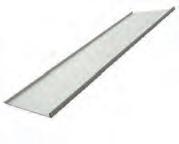
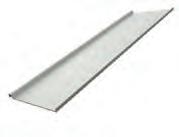




As shapers of COLORBOND® steel we’re inspired to make the products that help you deliver exceptional building designs. The ZENITH® premium cladding range delivers a bolder aesthetic, paired with the exceptional performance known and expected from LYSAGHT® products. Inspired by the best in European design, the six profiles in the ZENITH® range each offer a distinctive character which makes a dramatic style statement.
